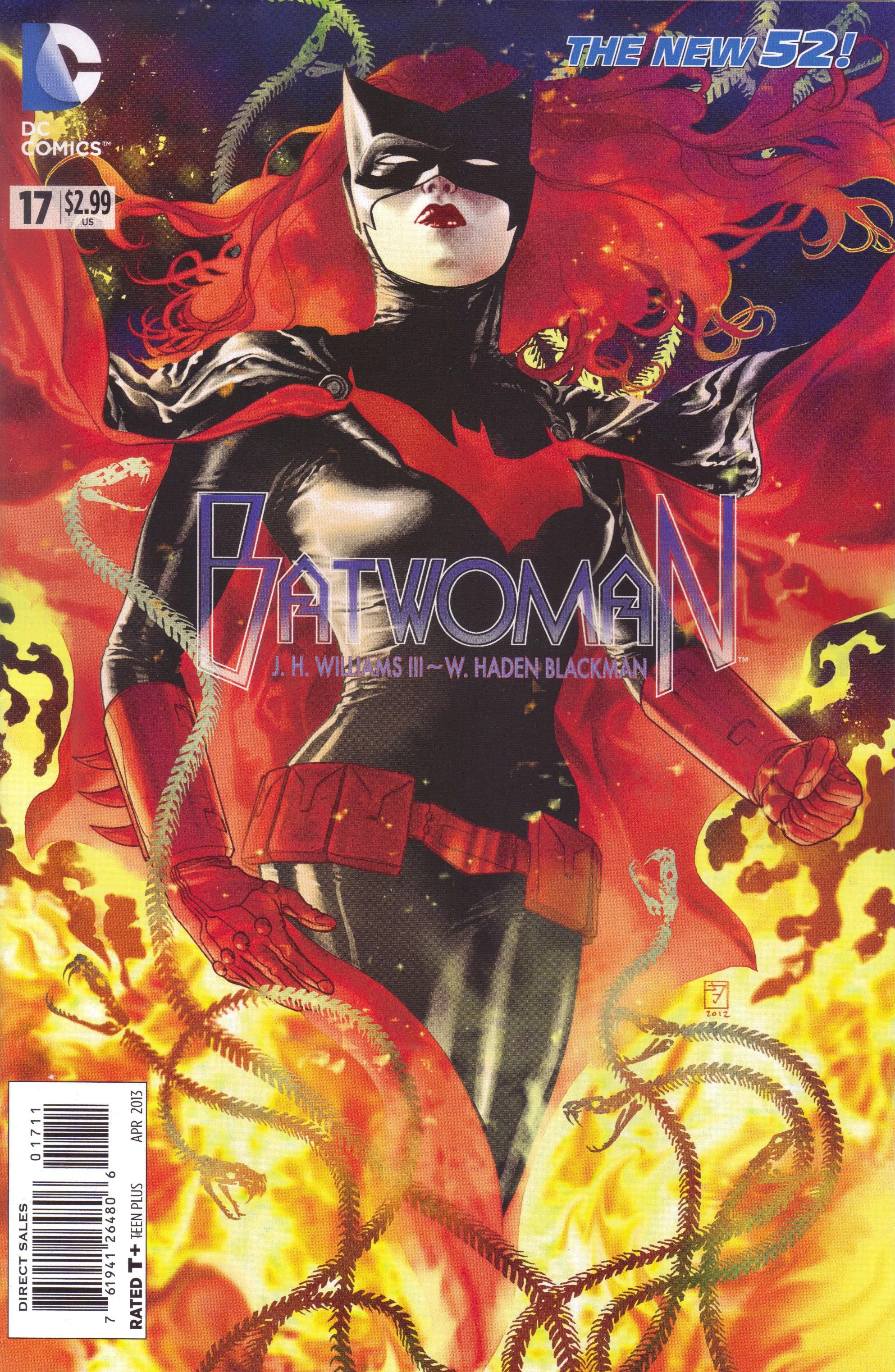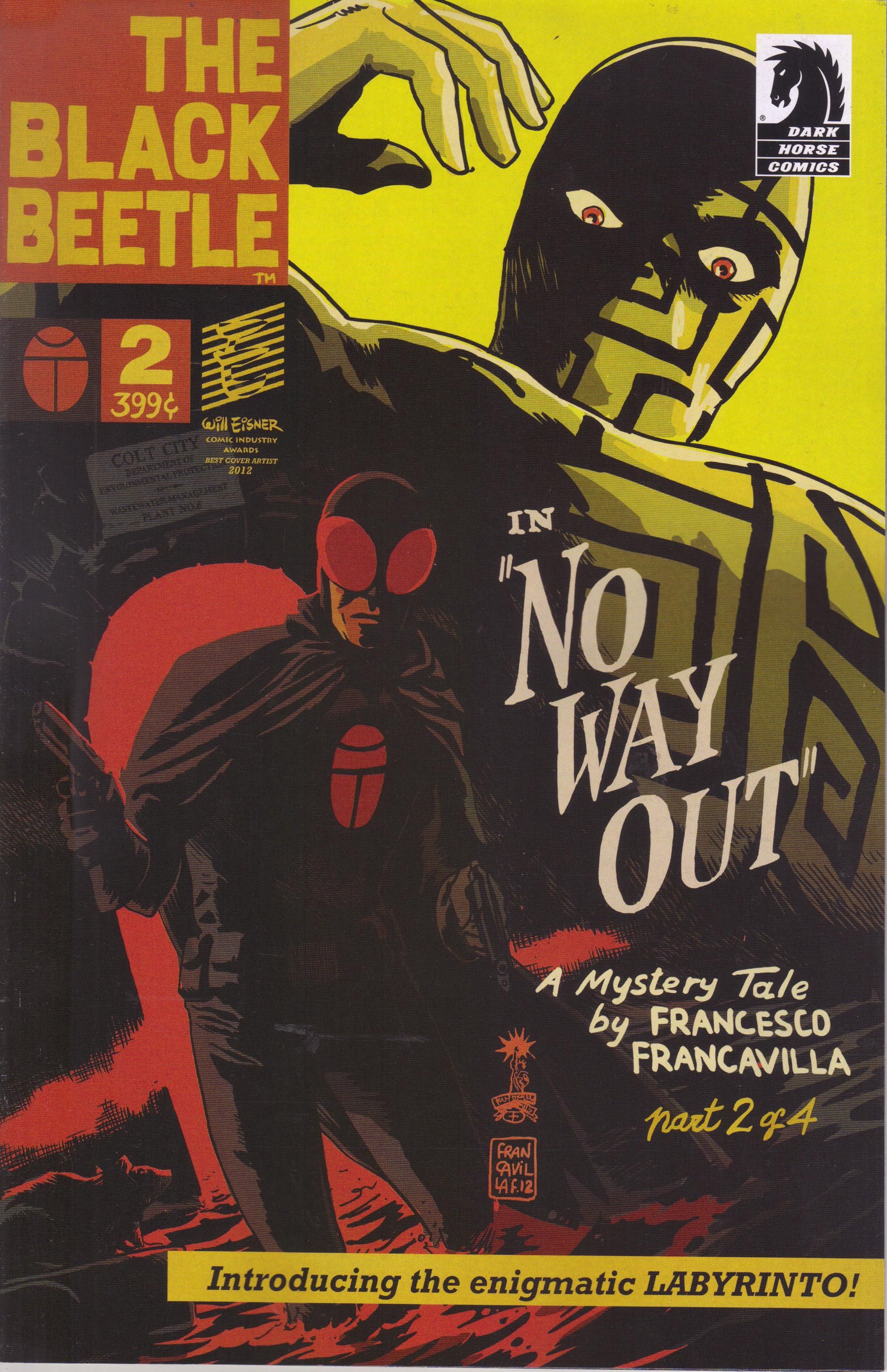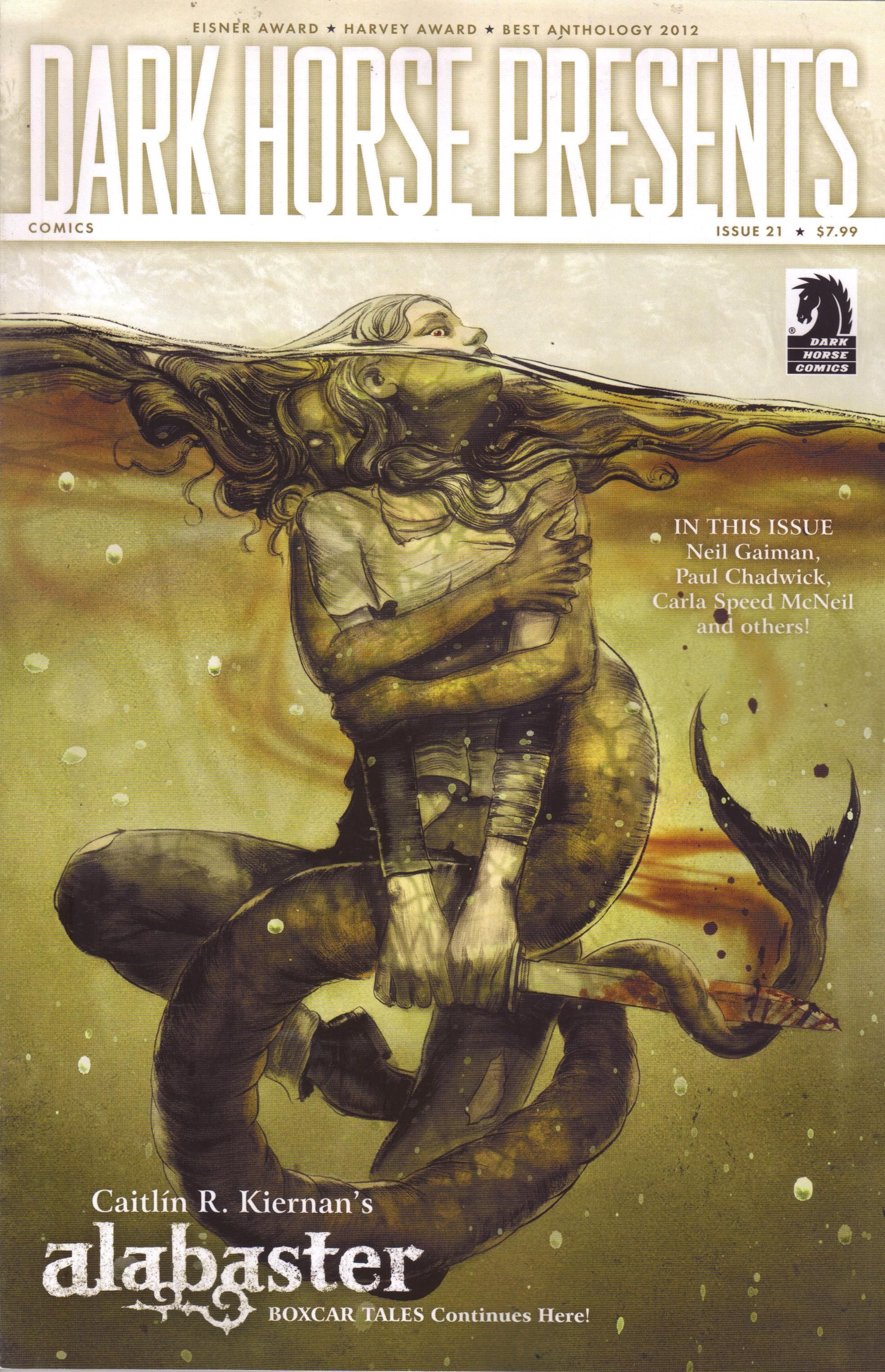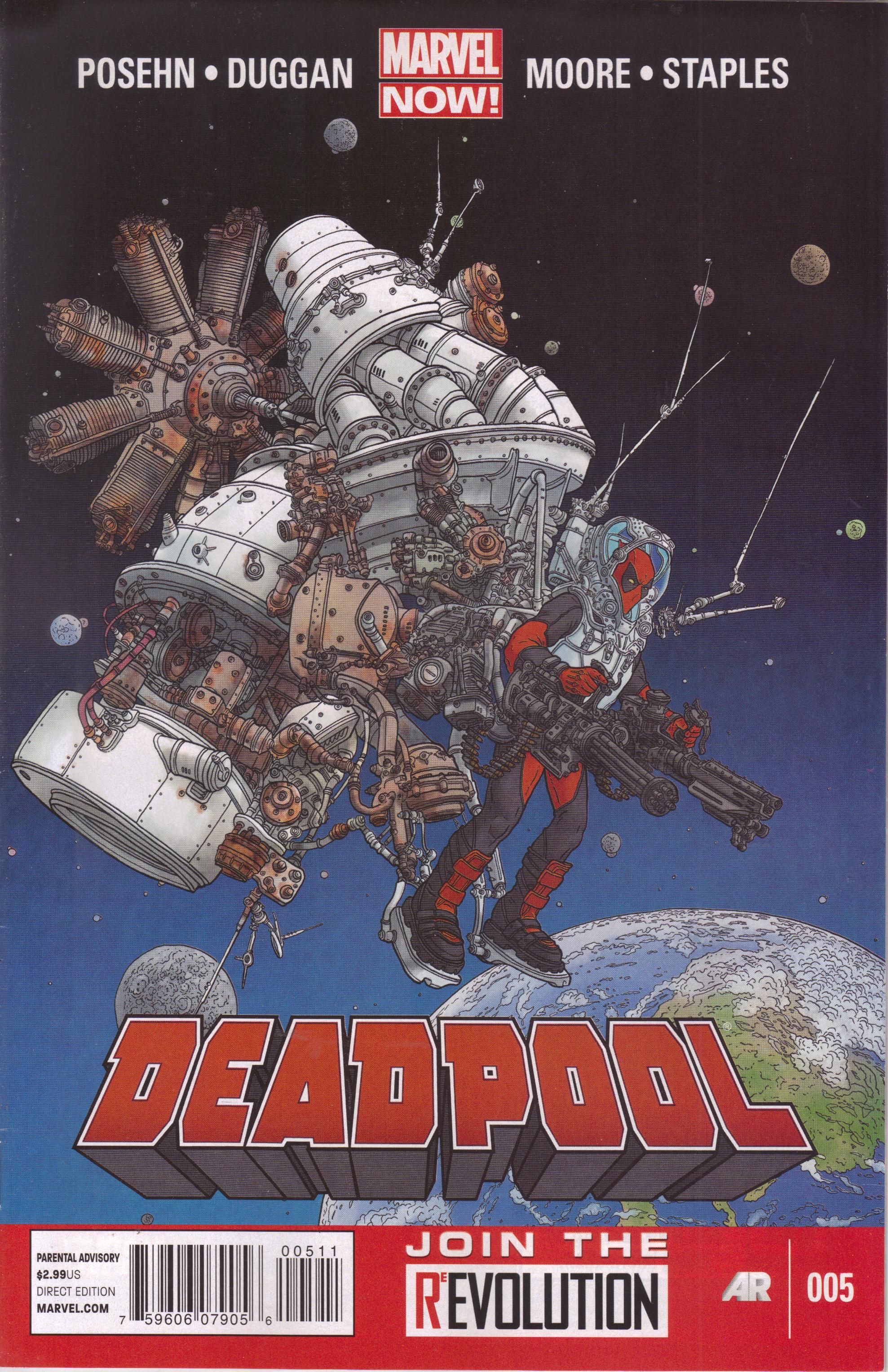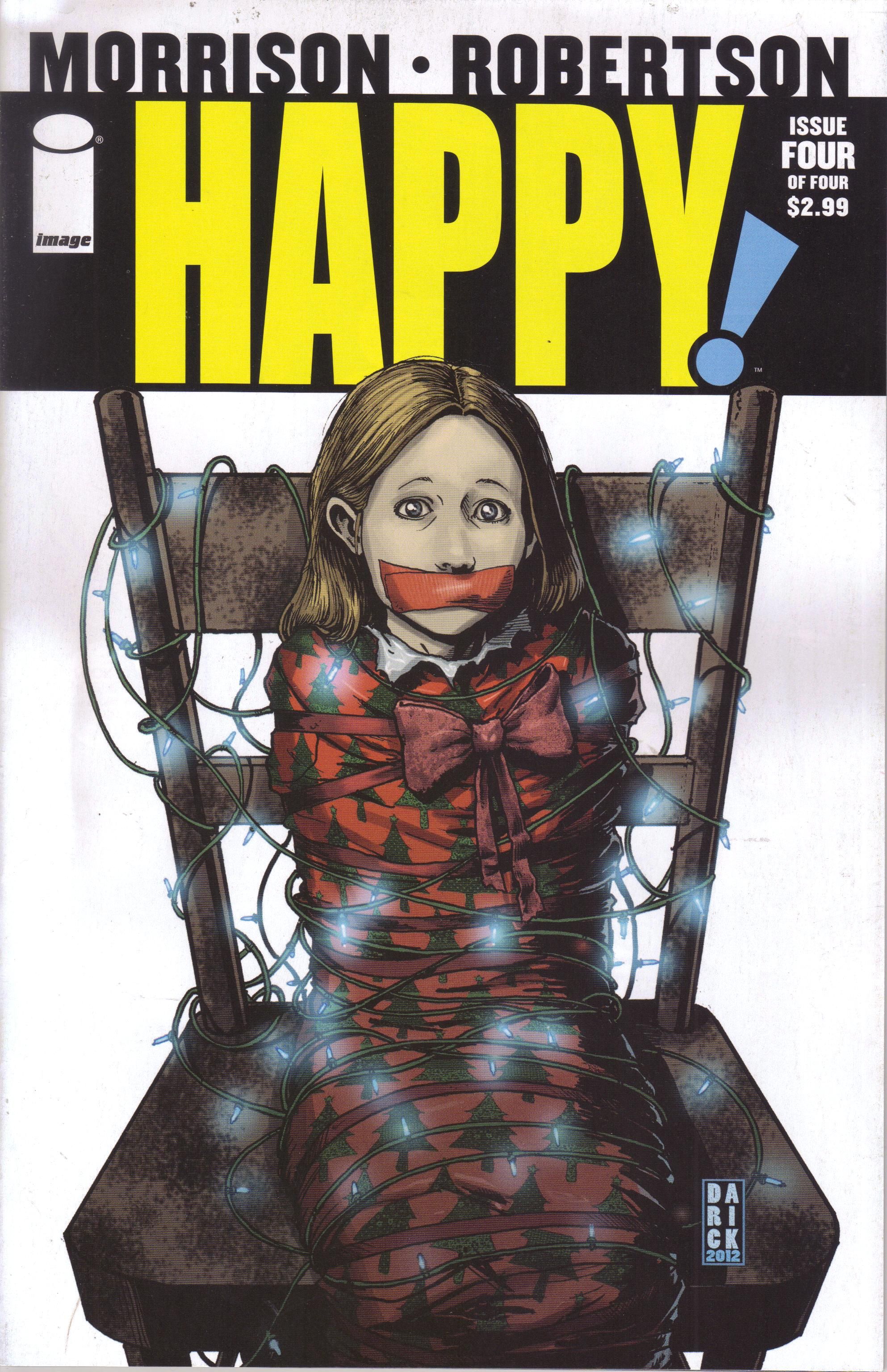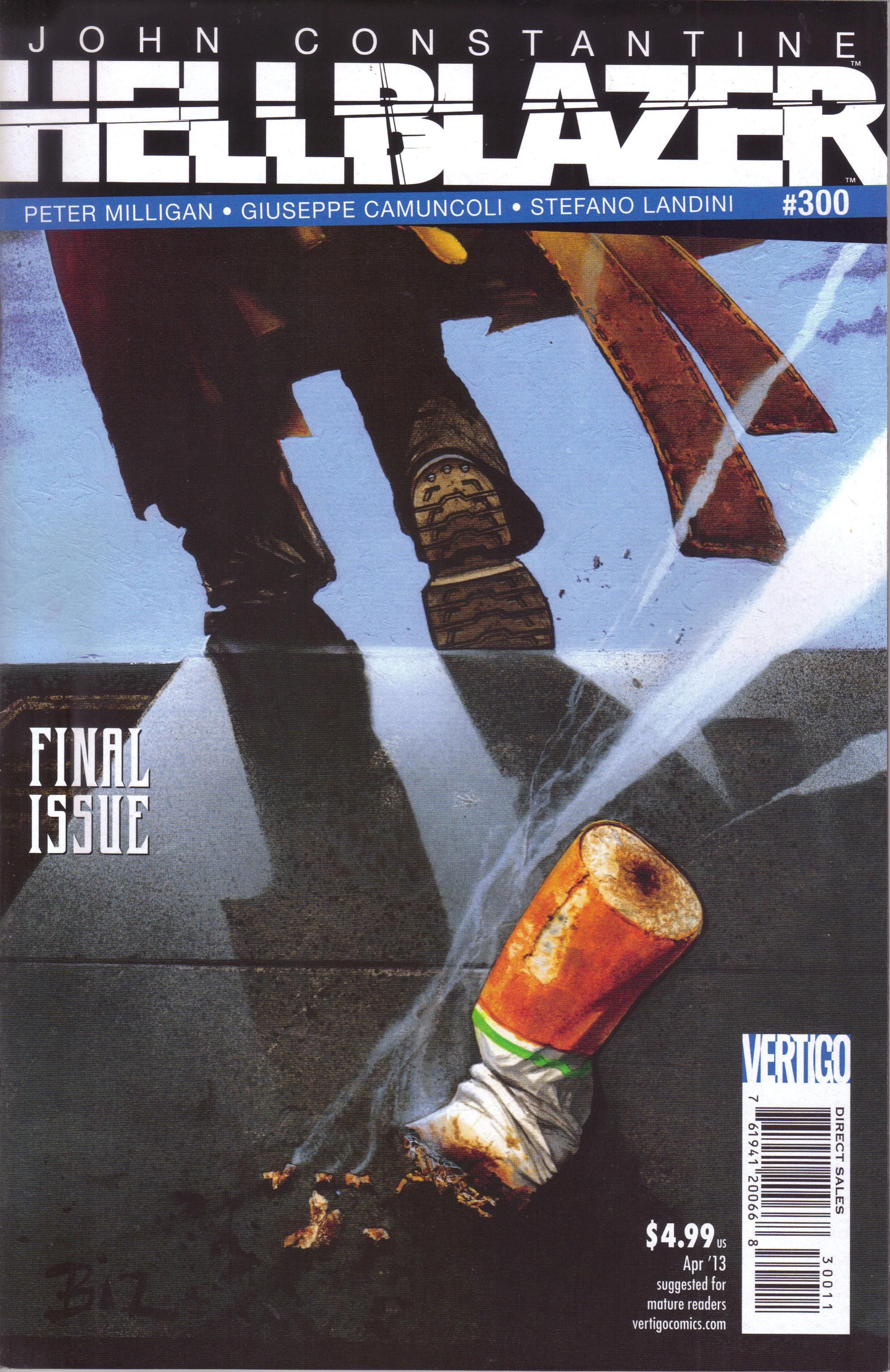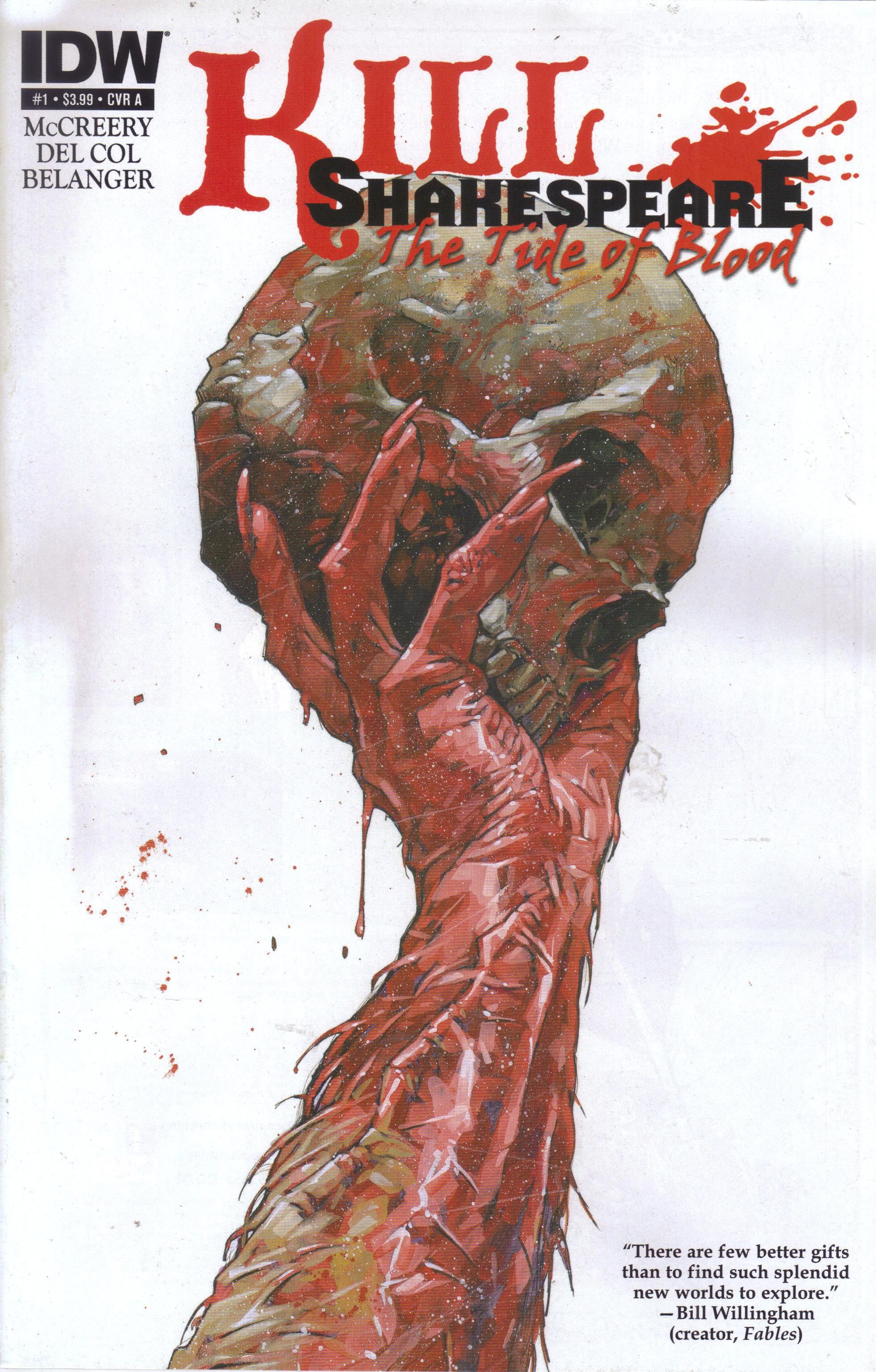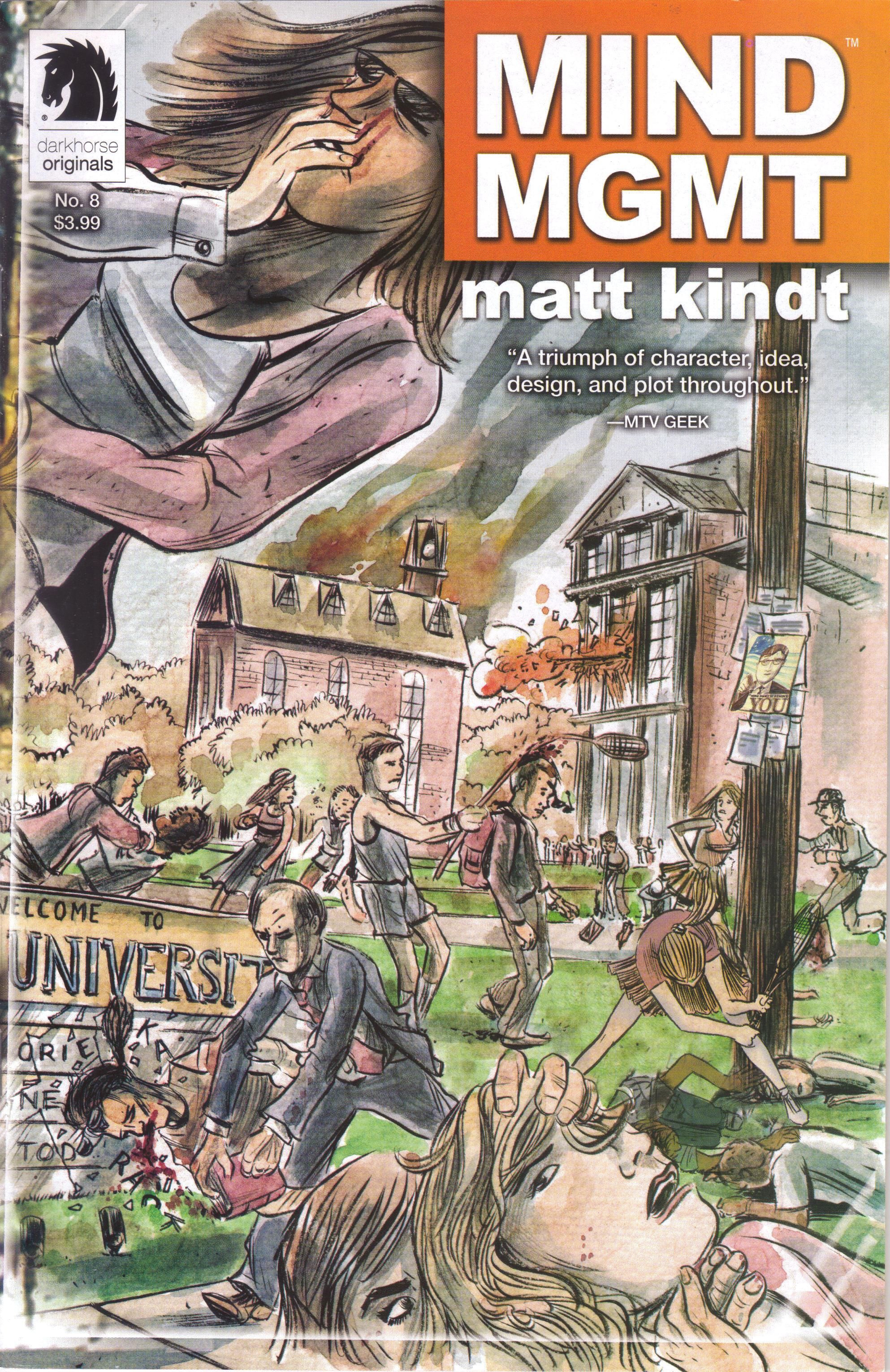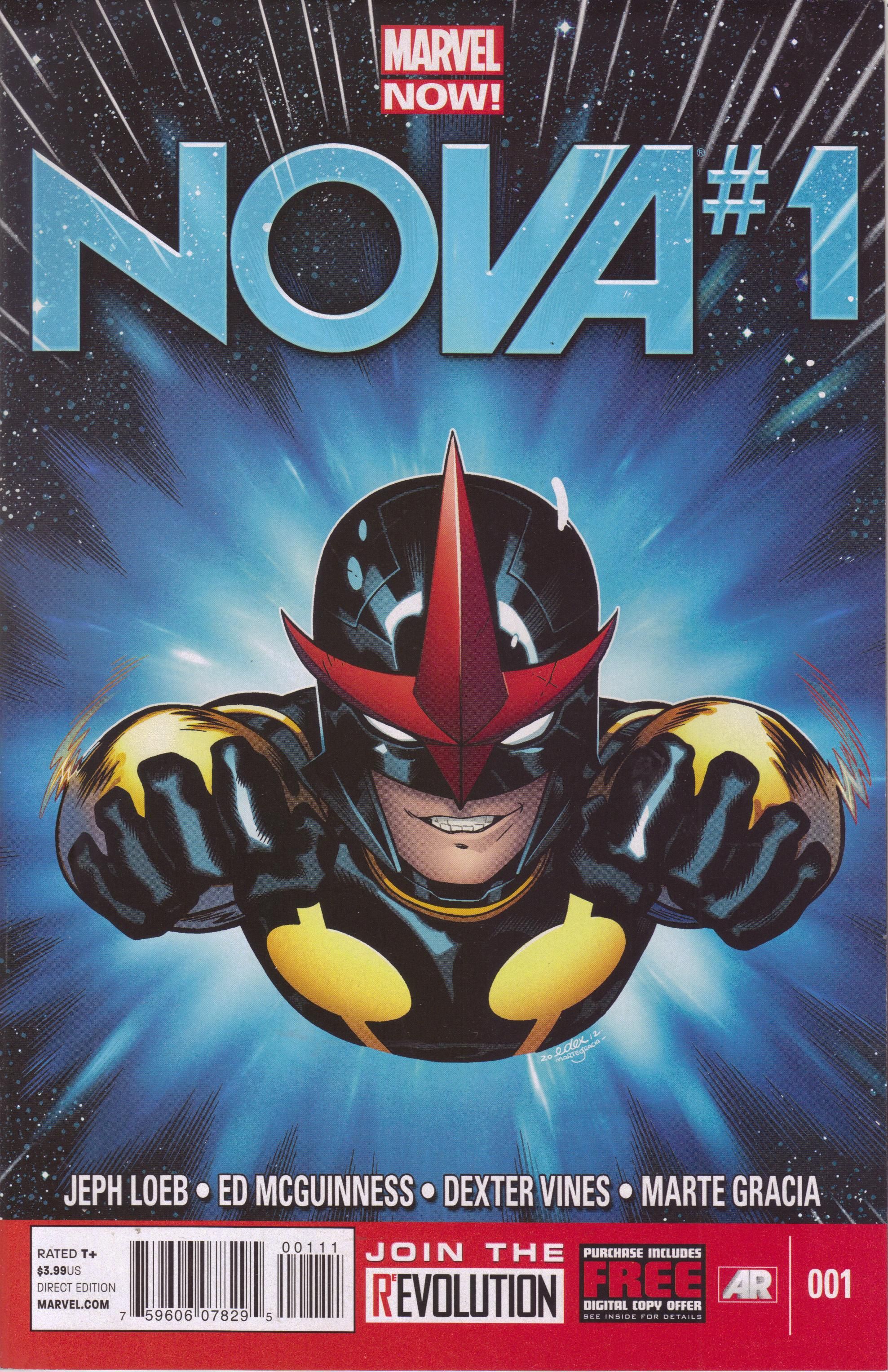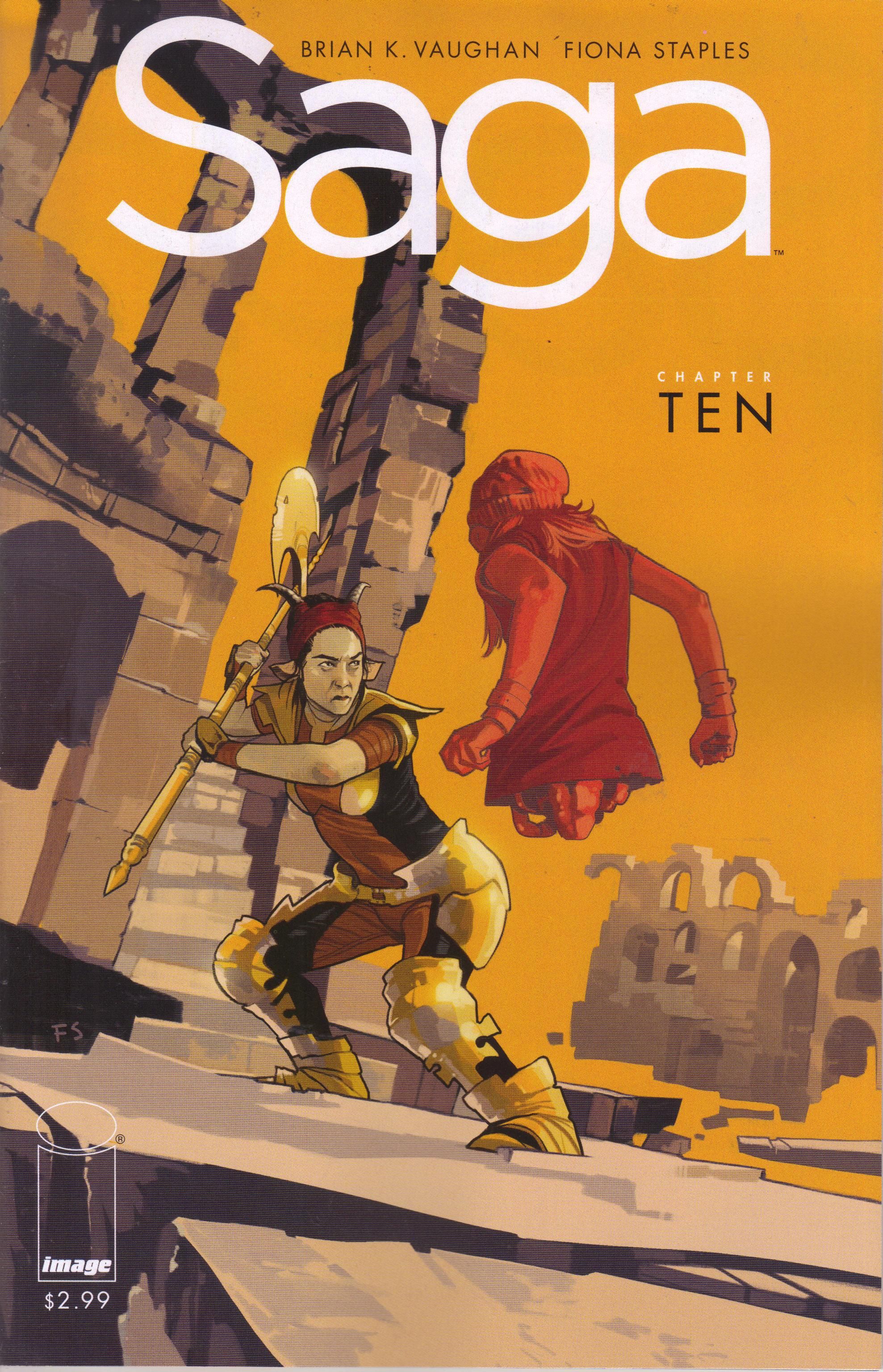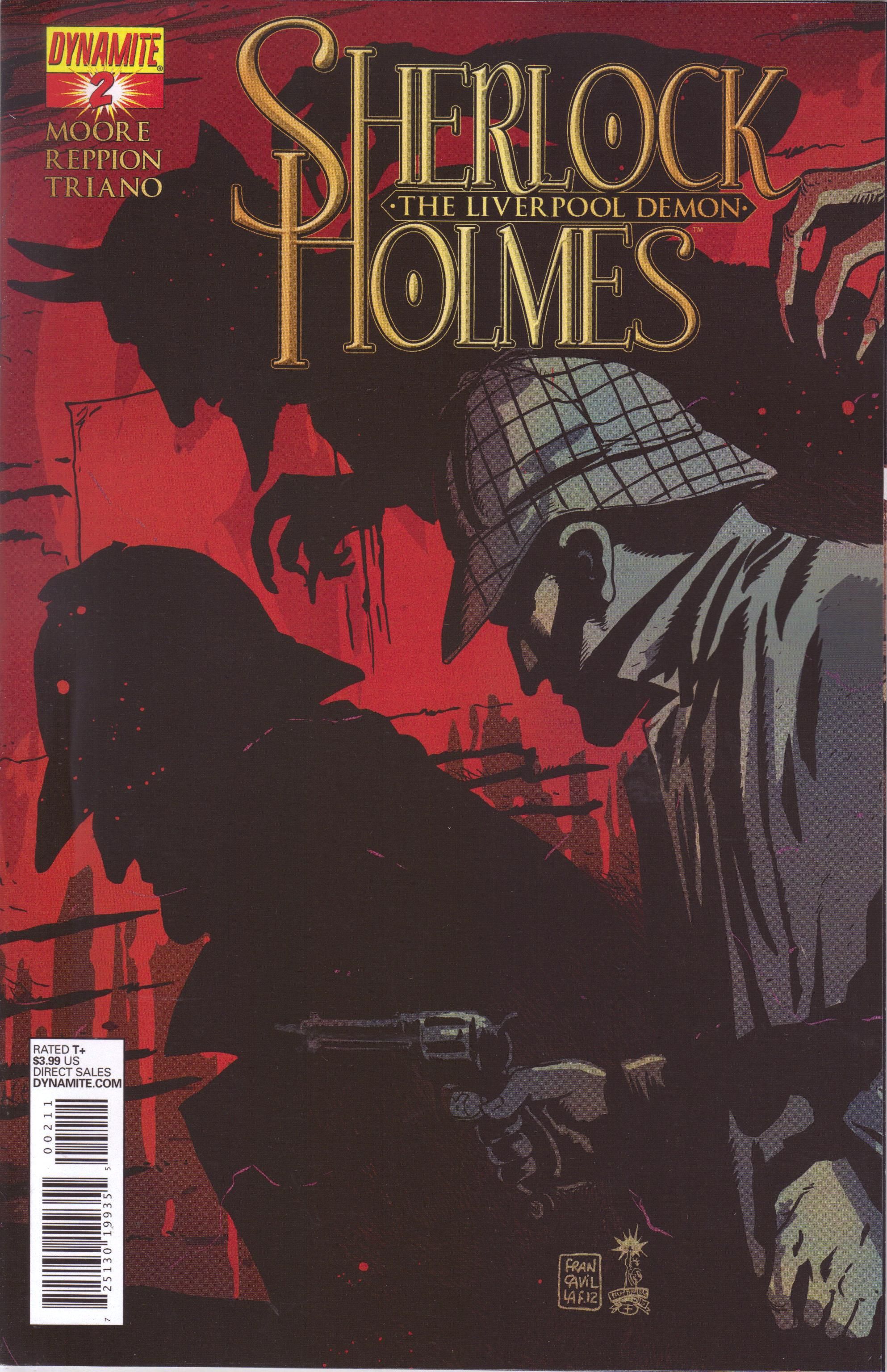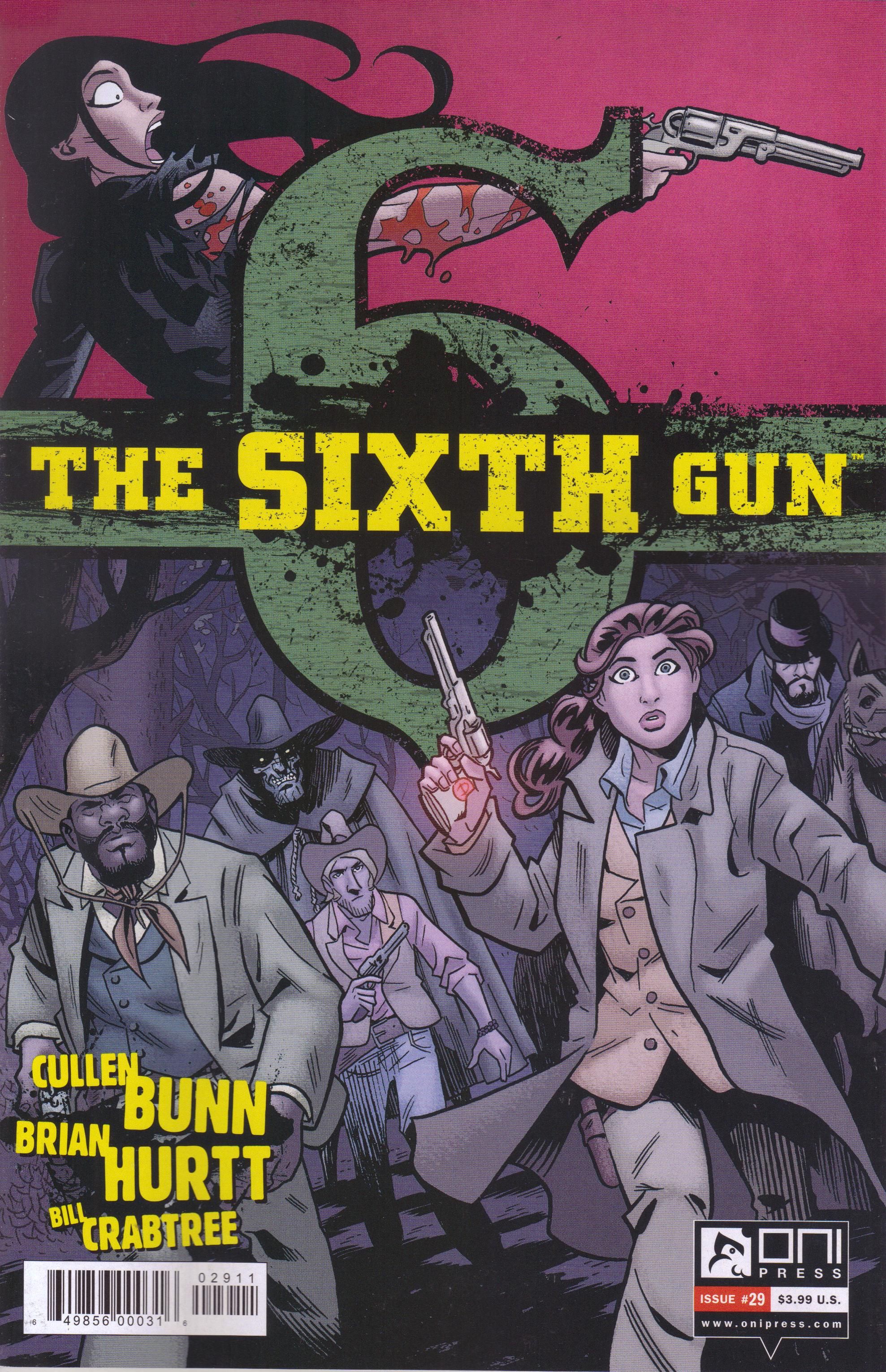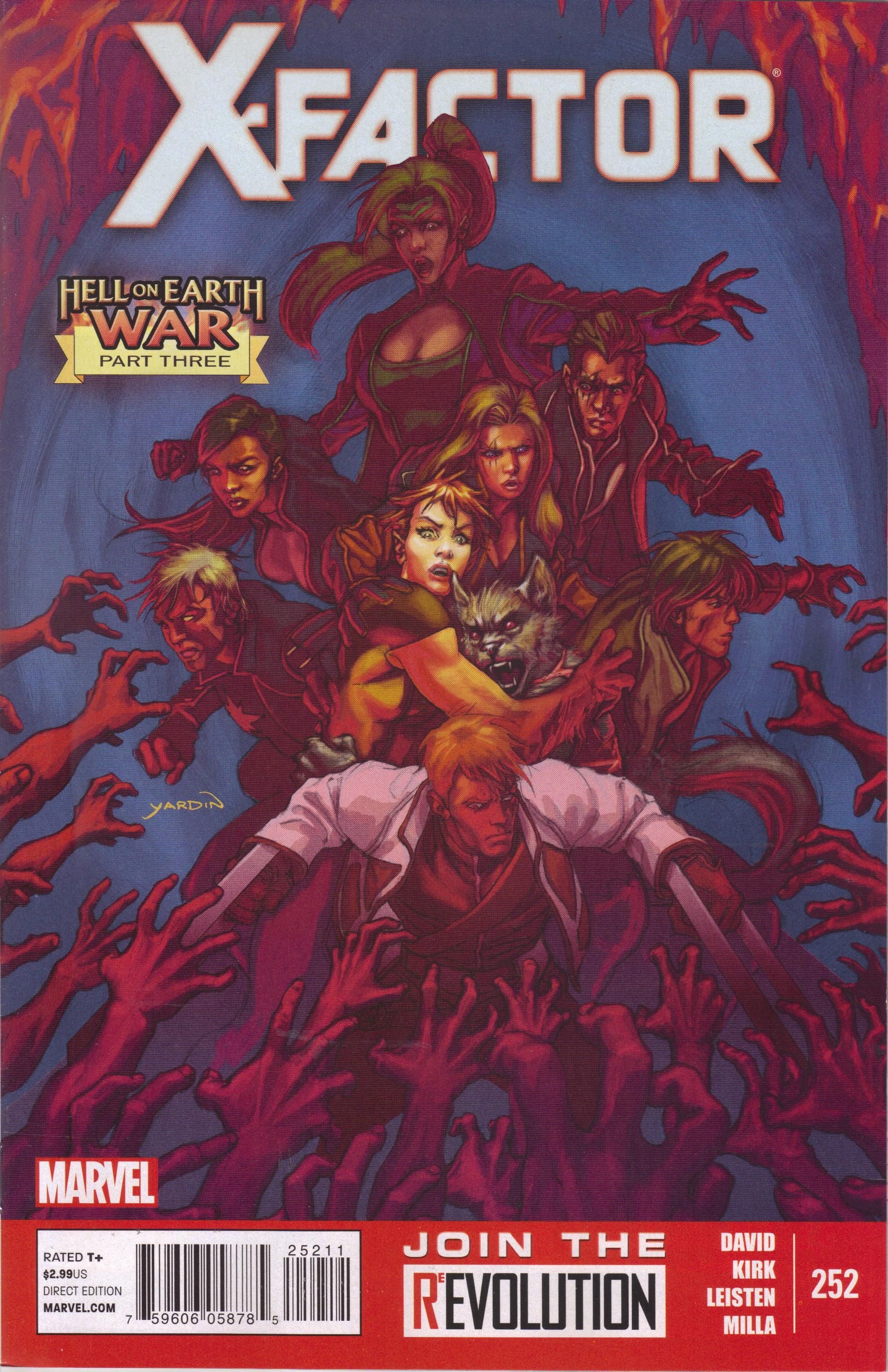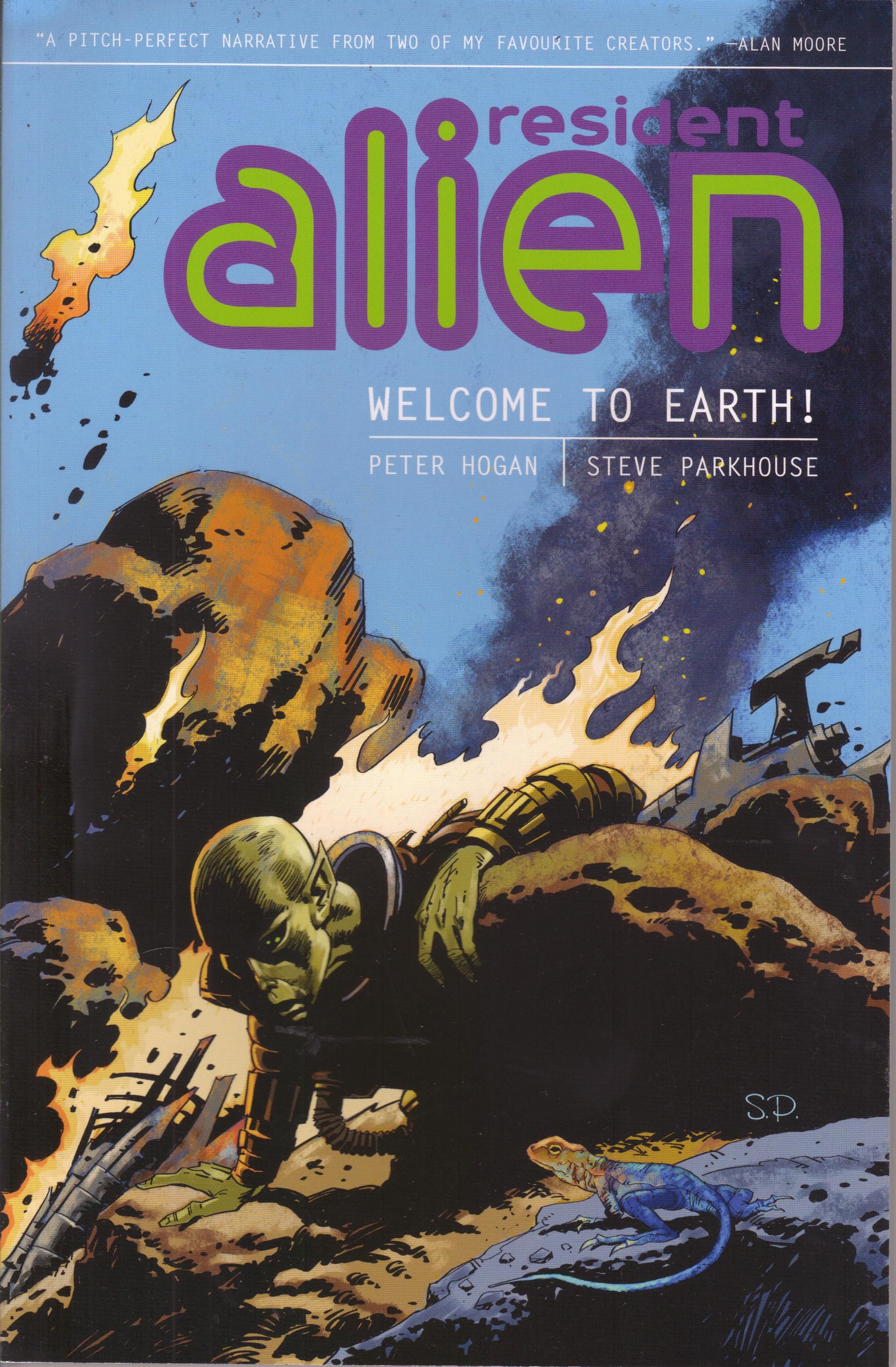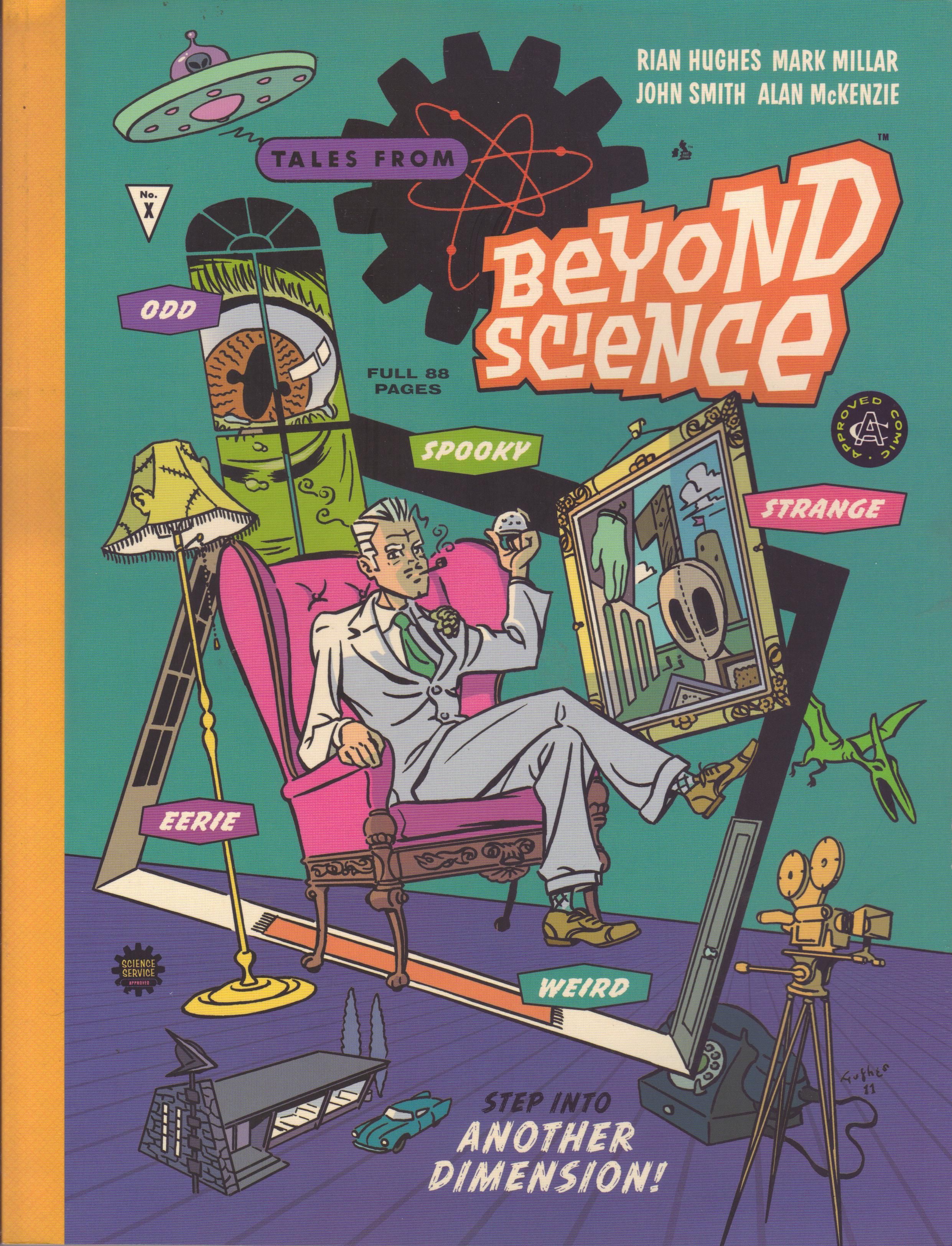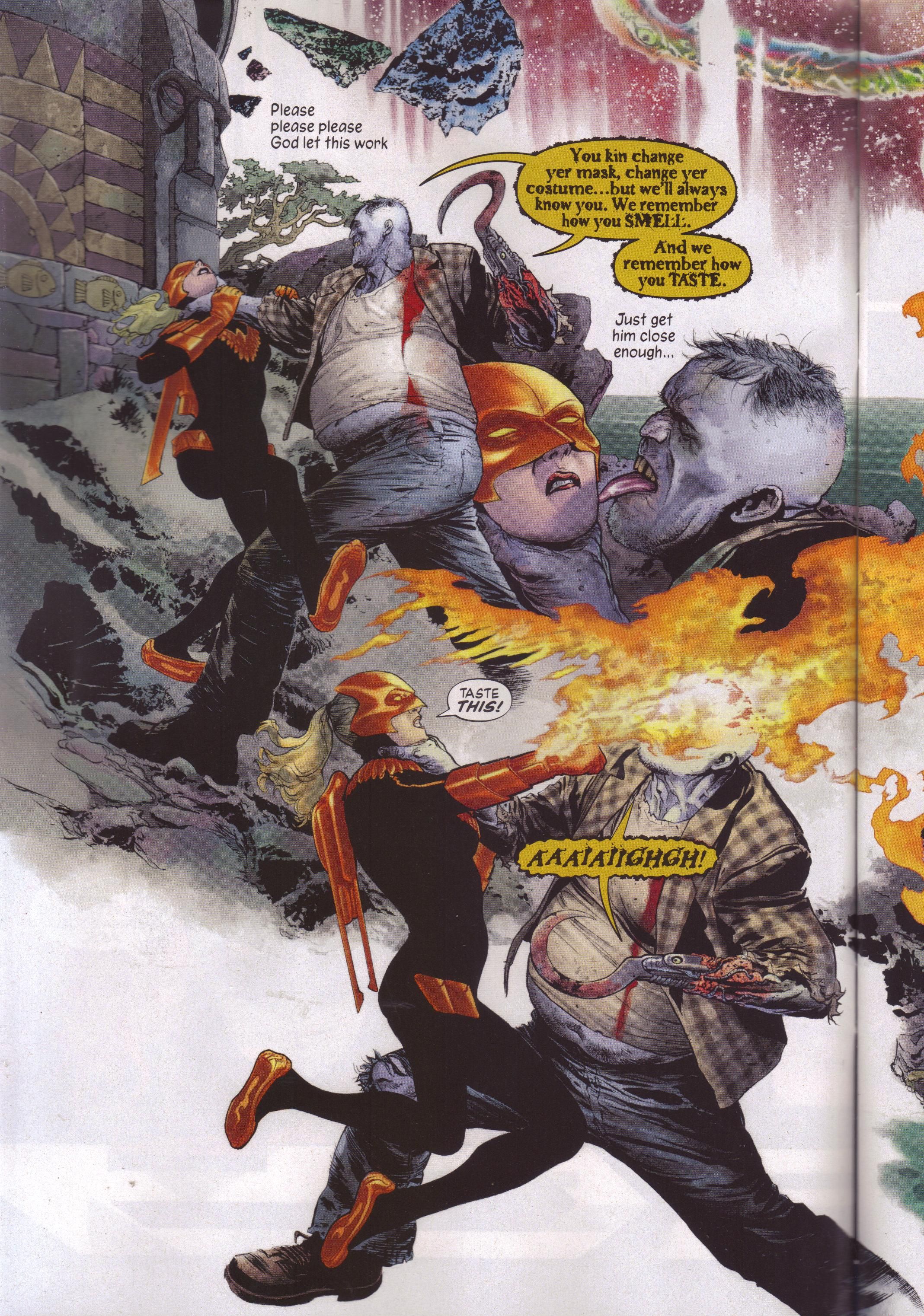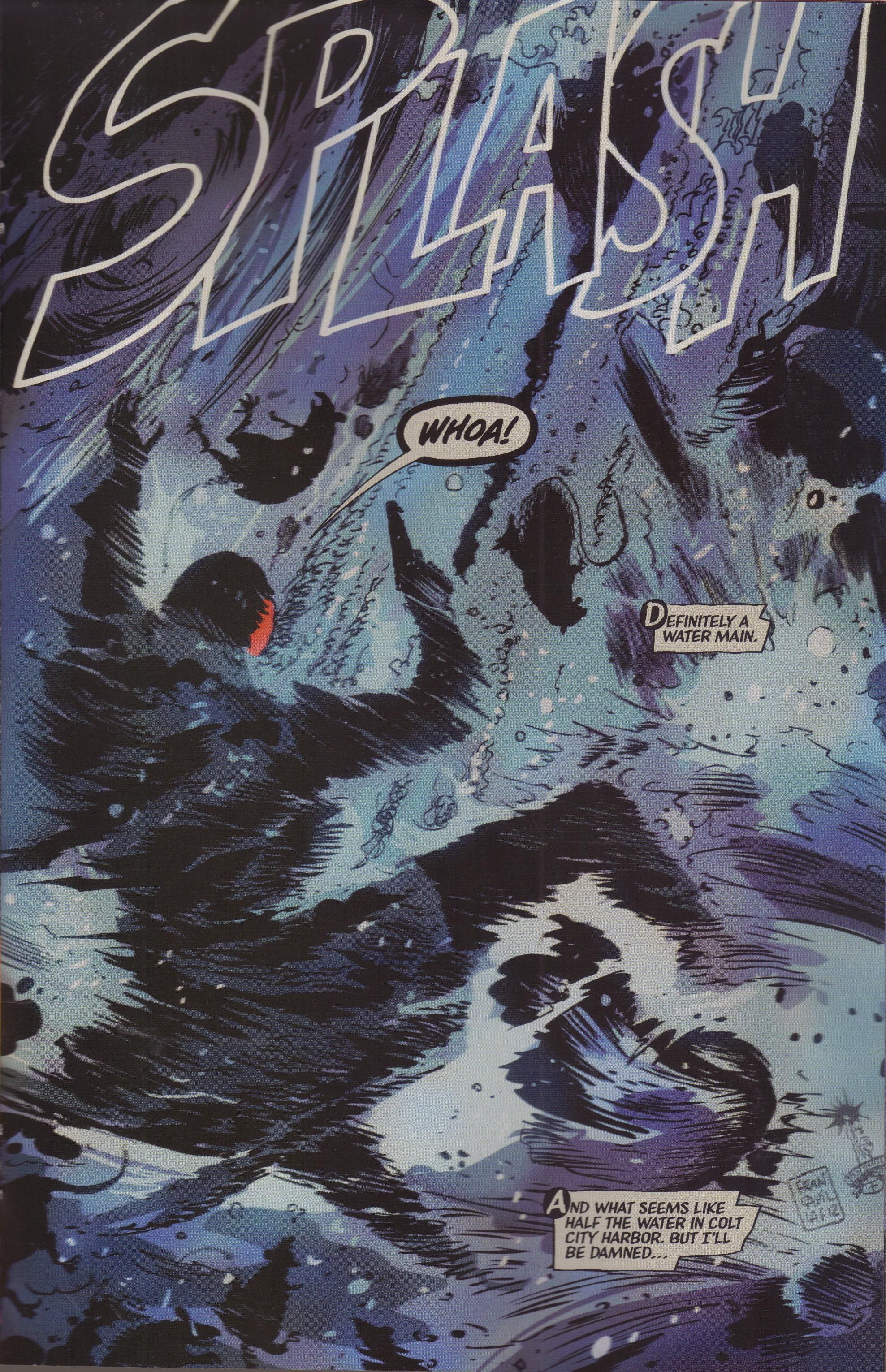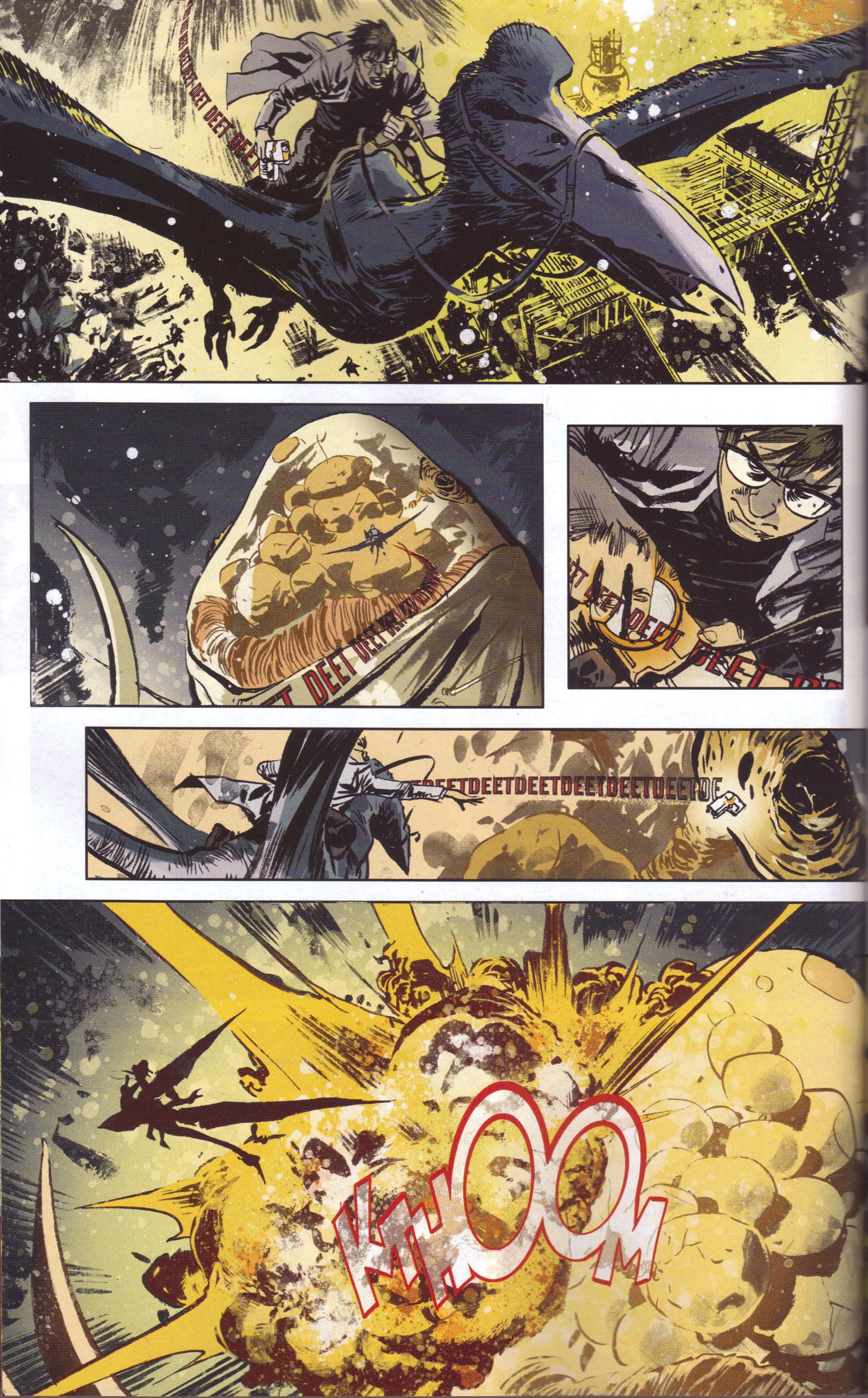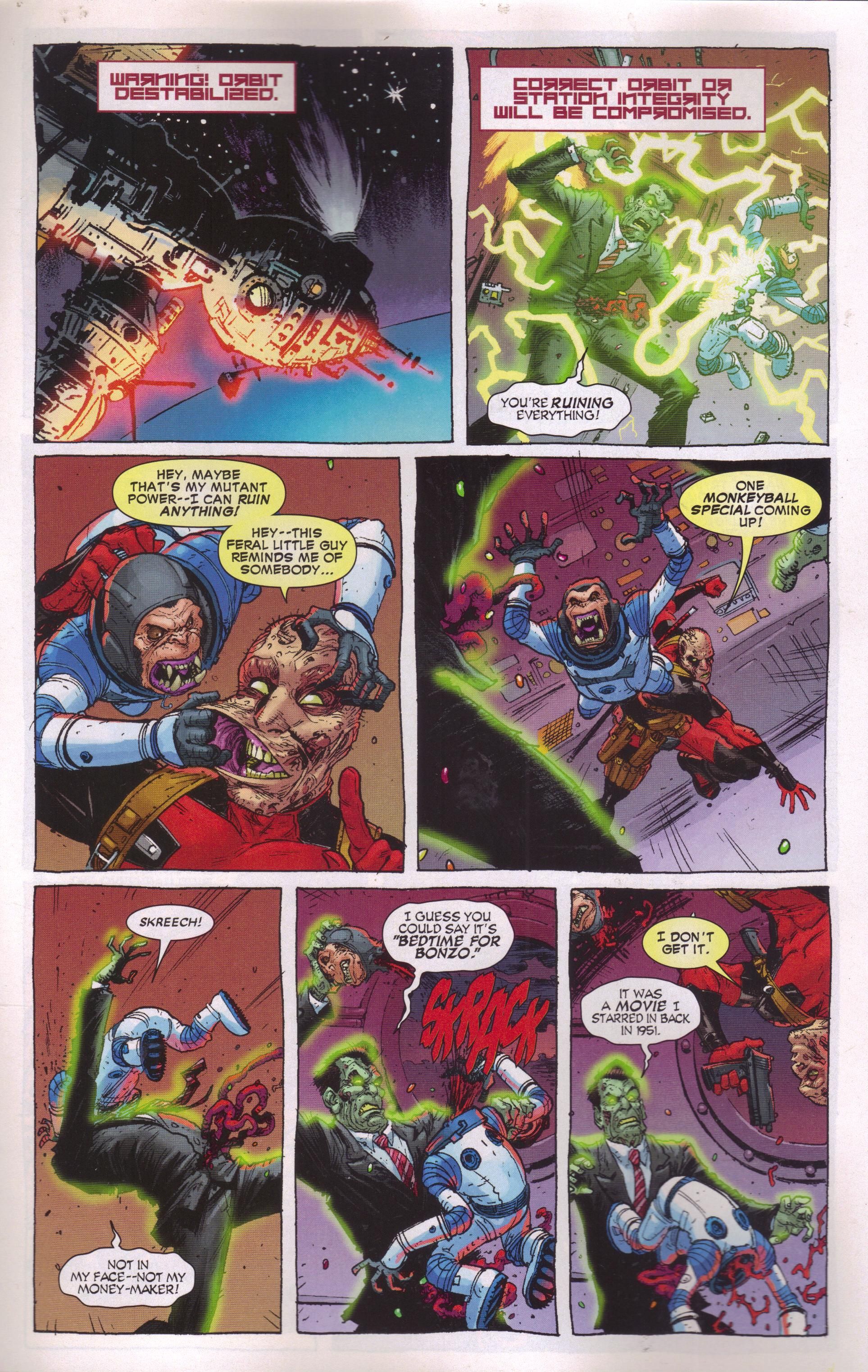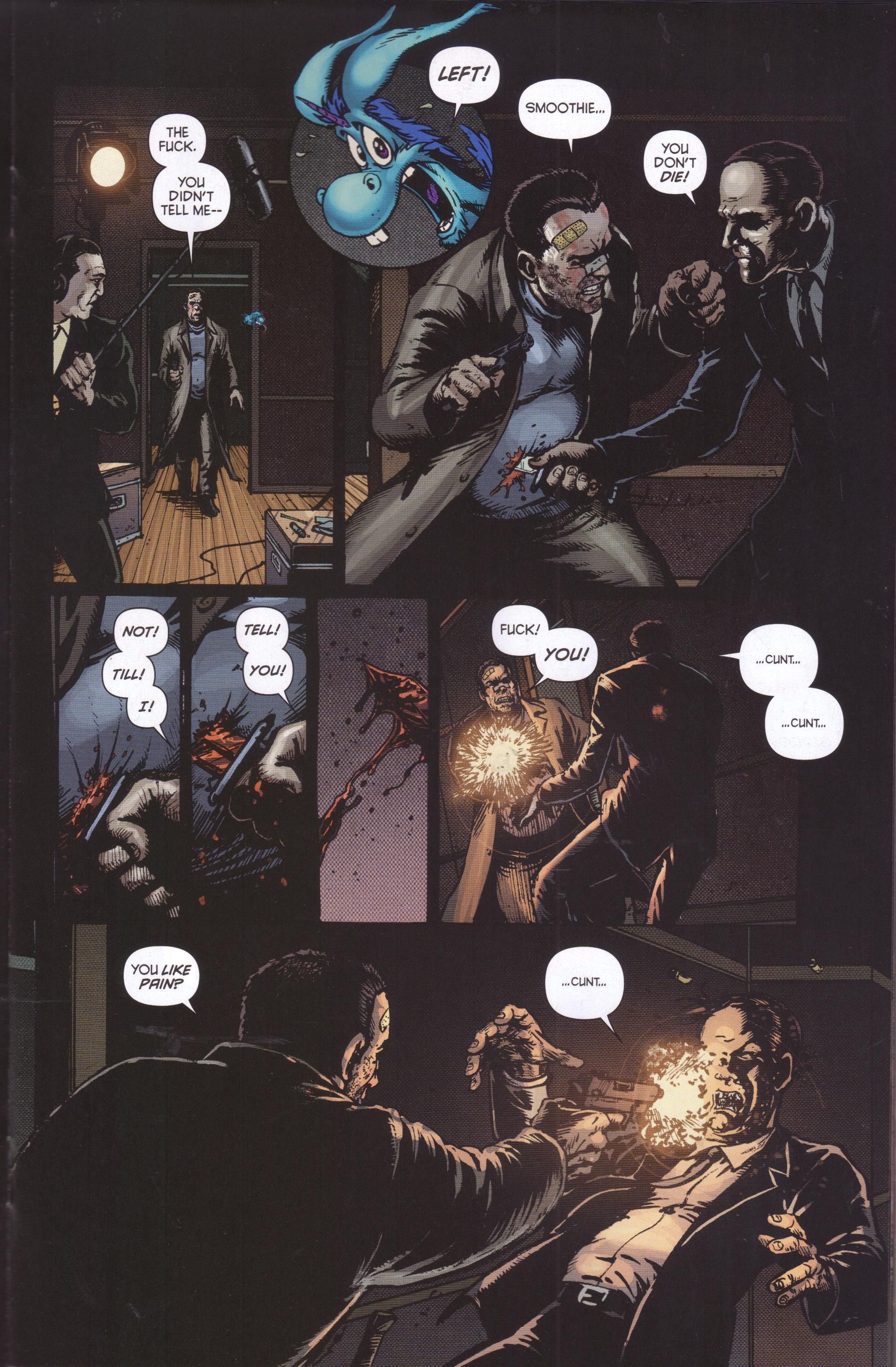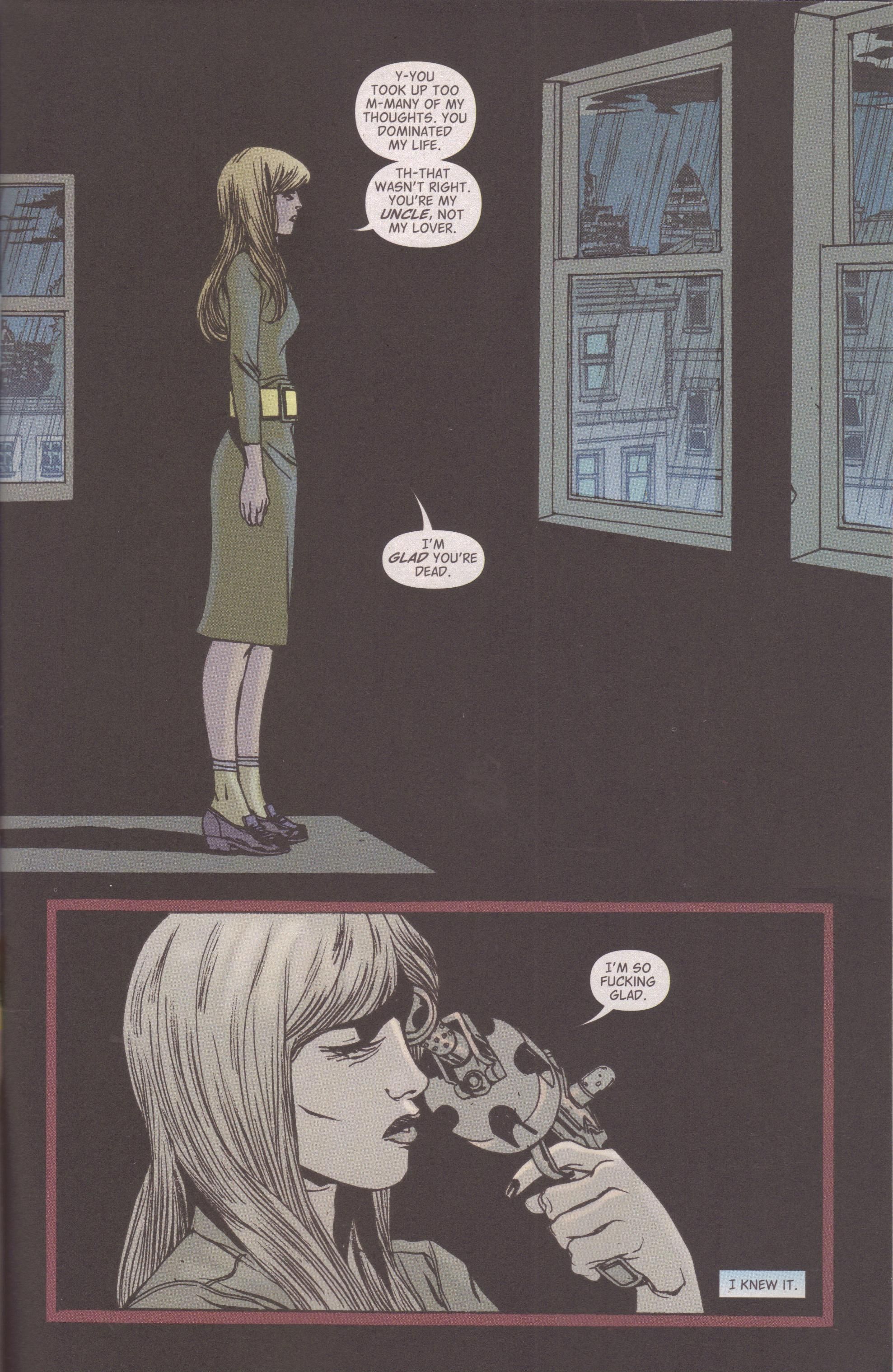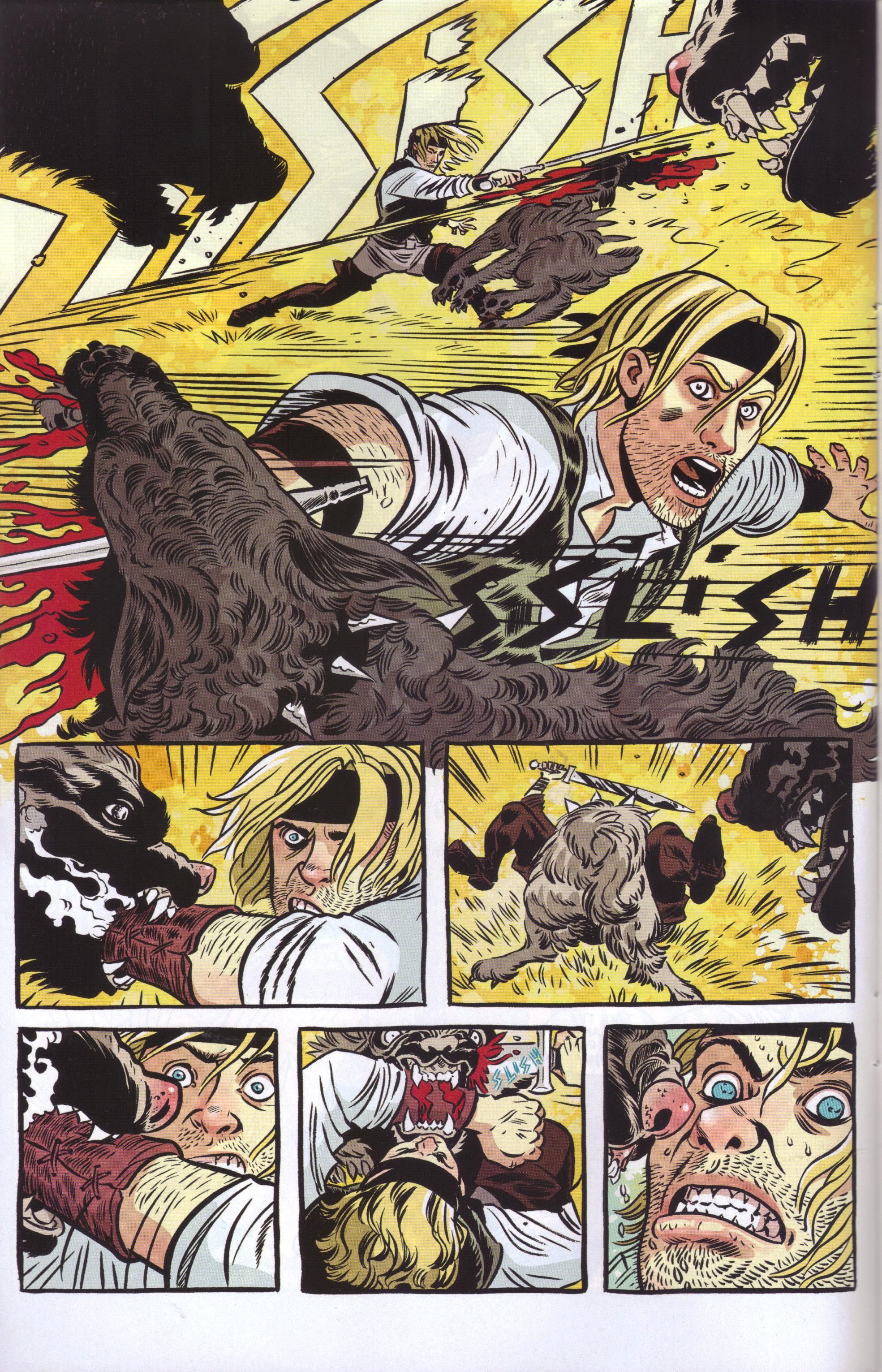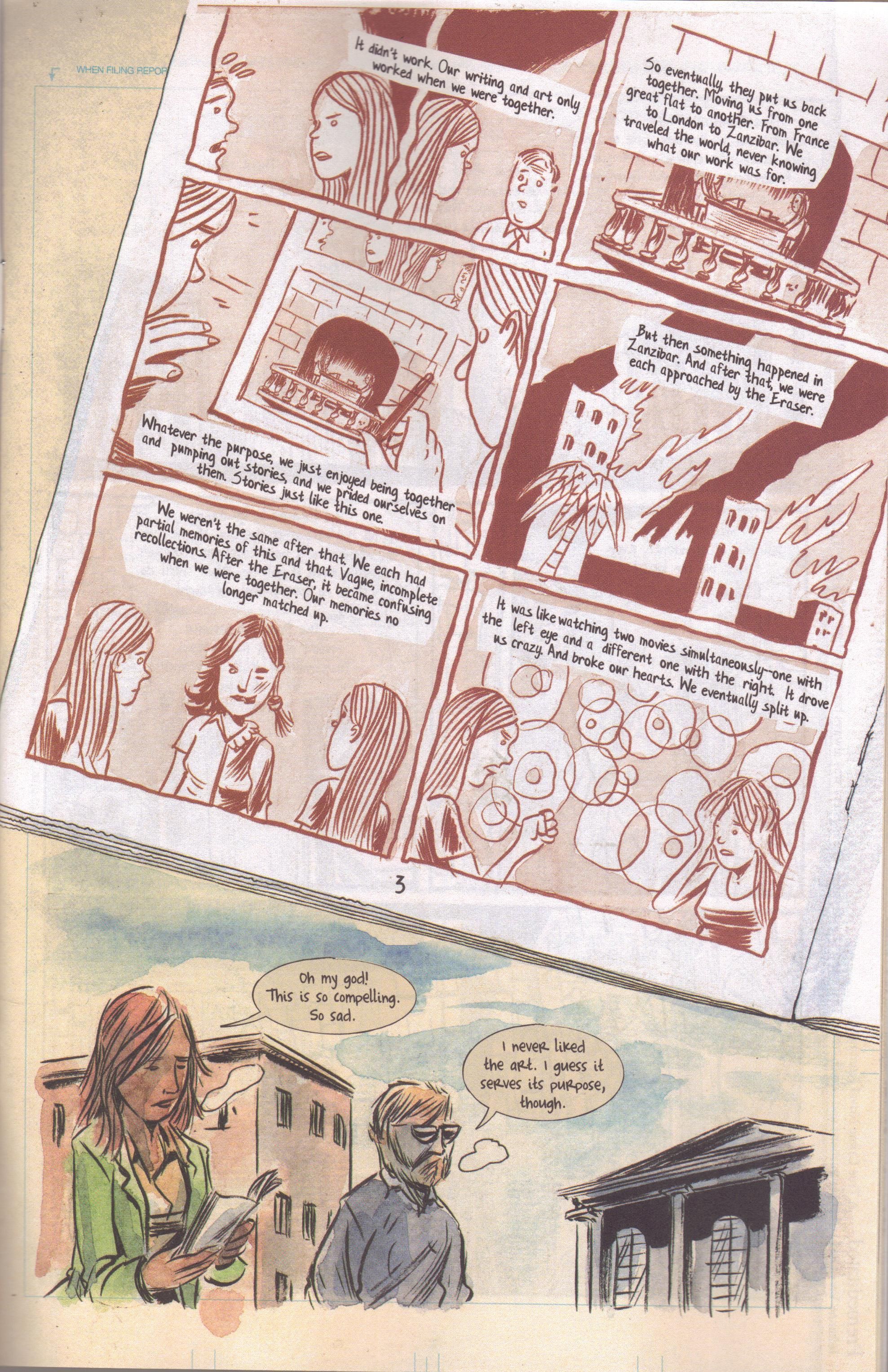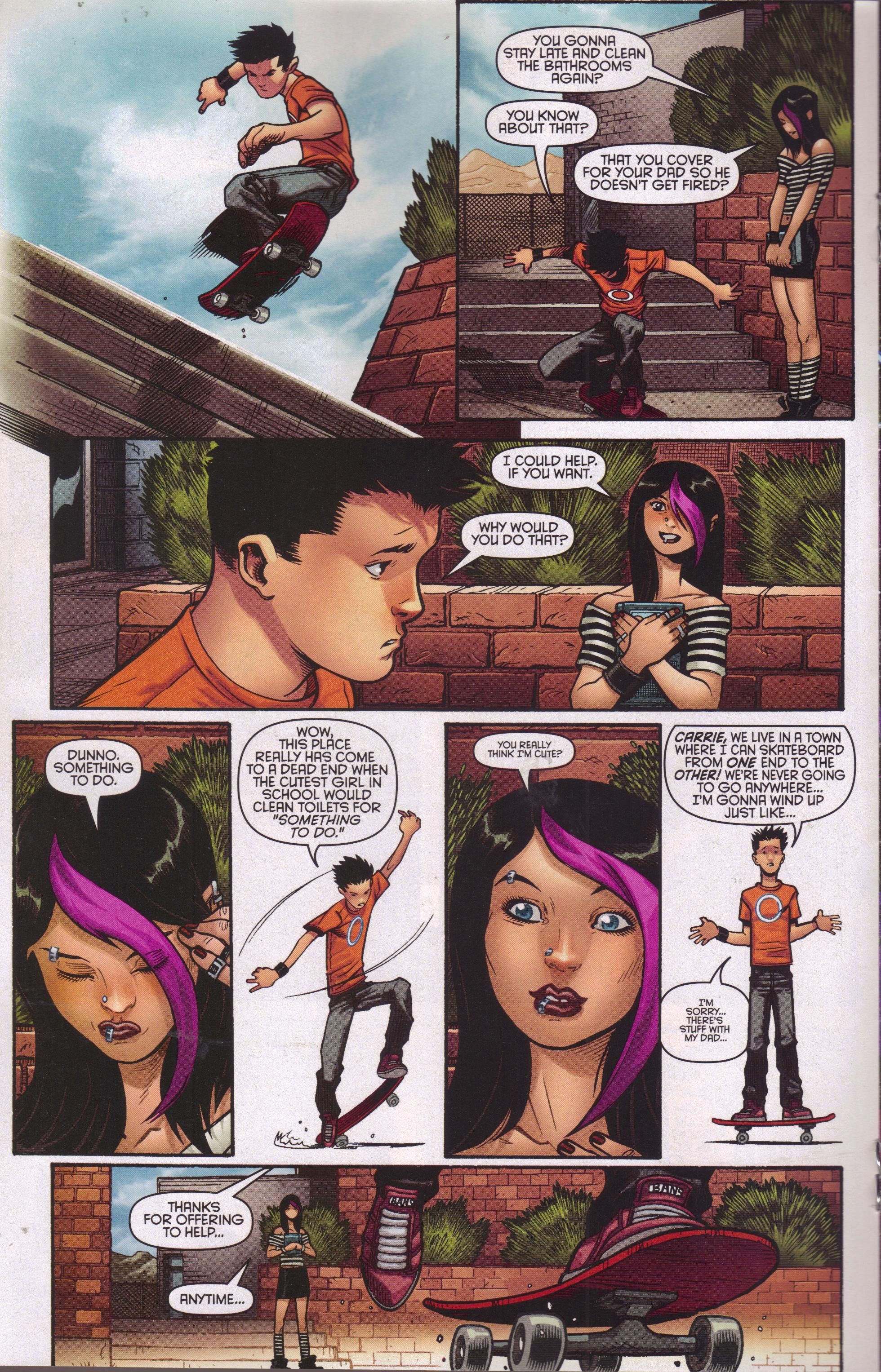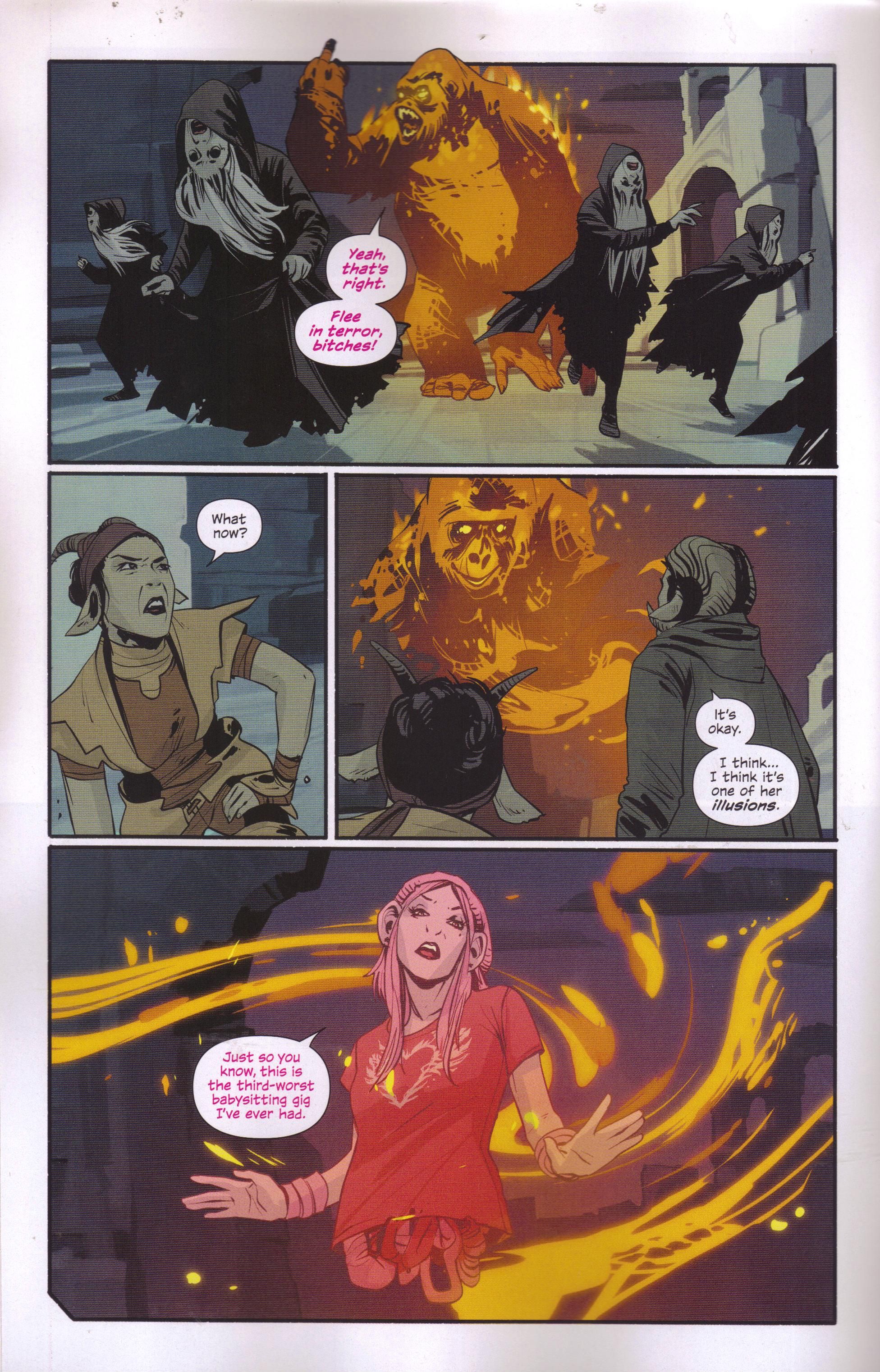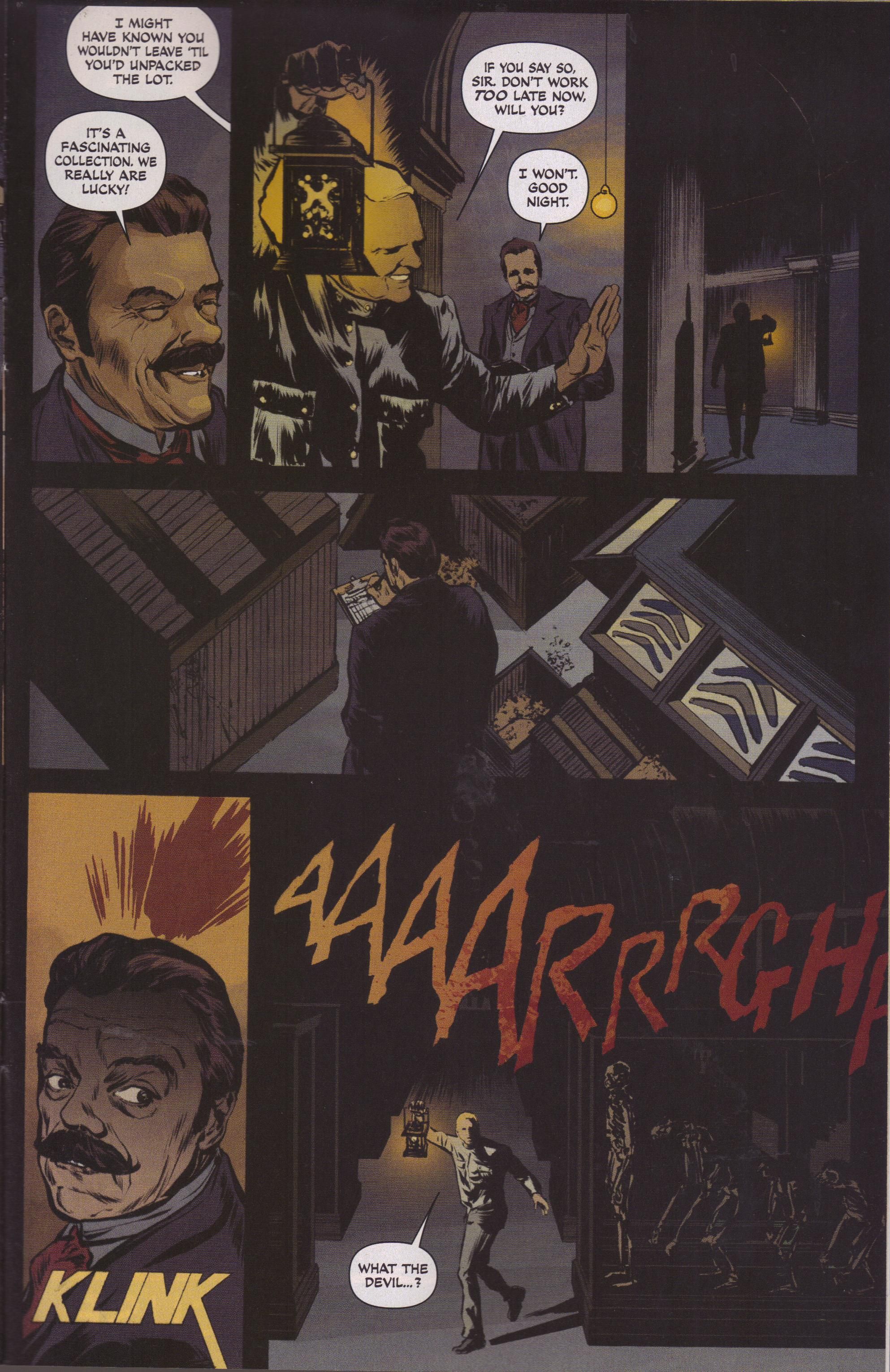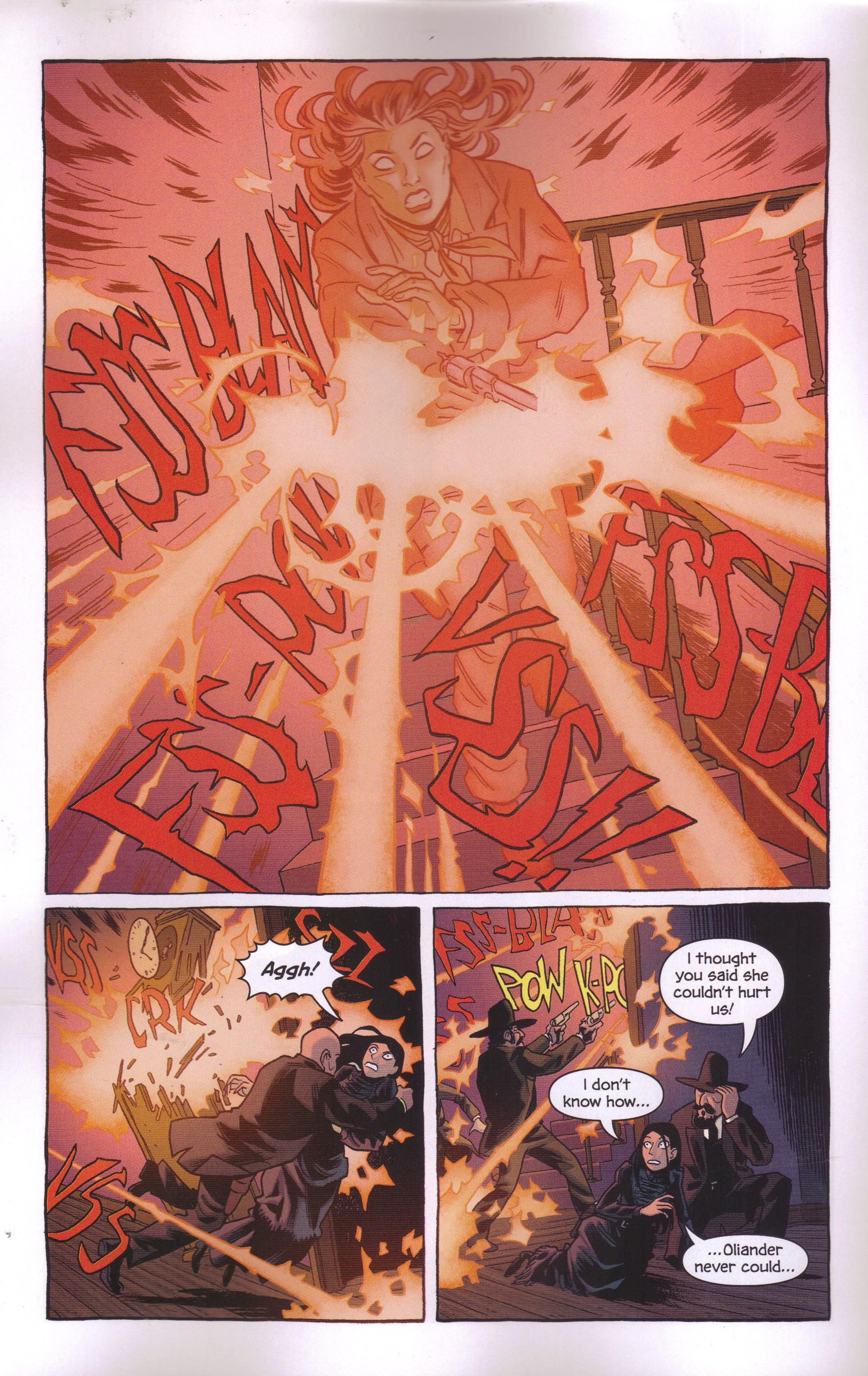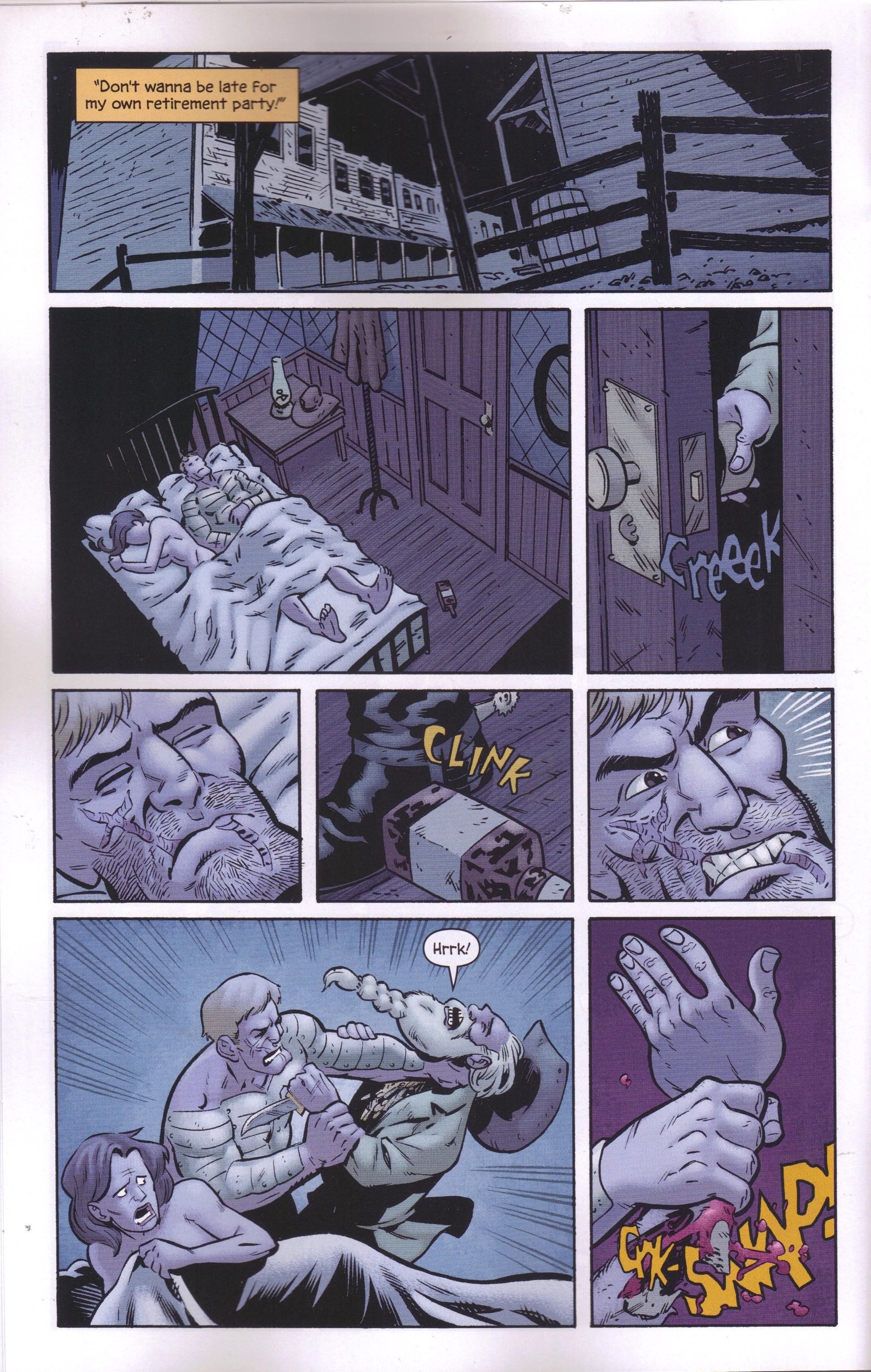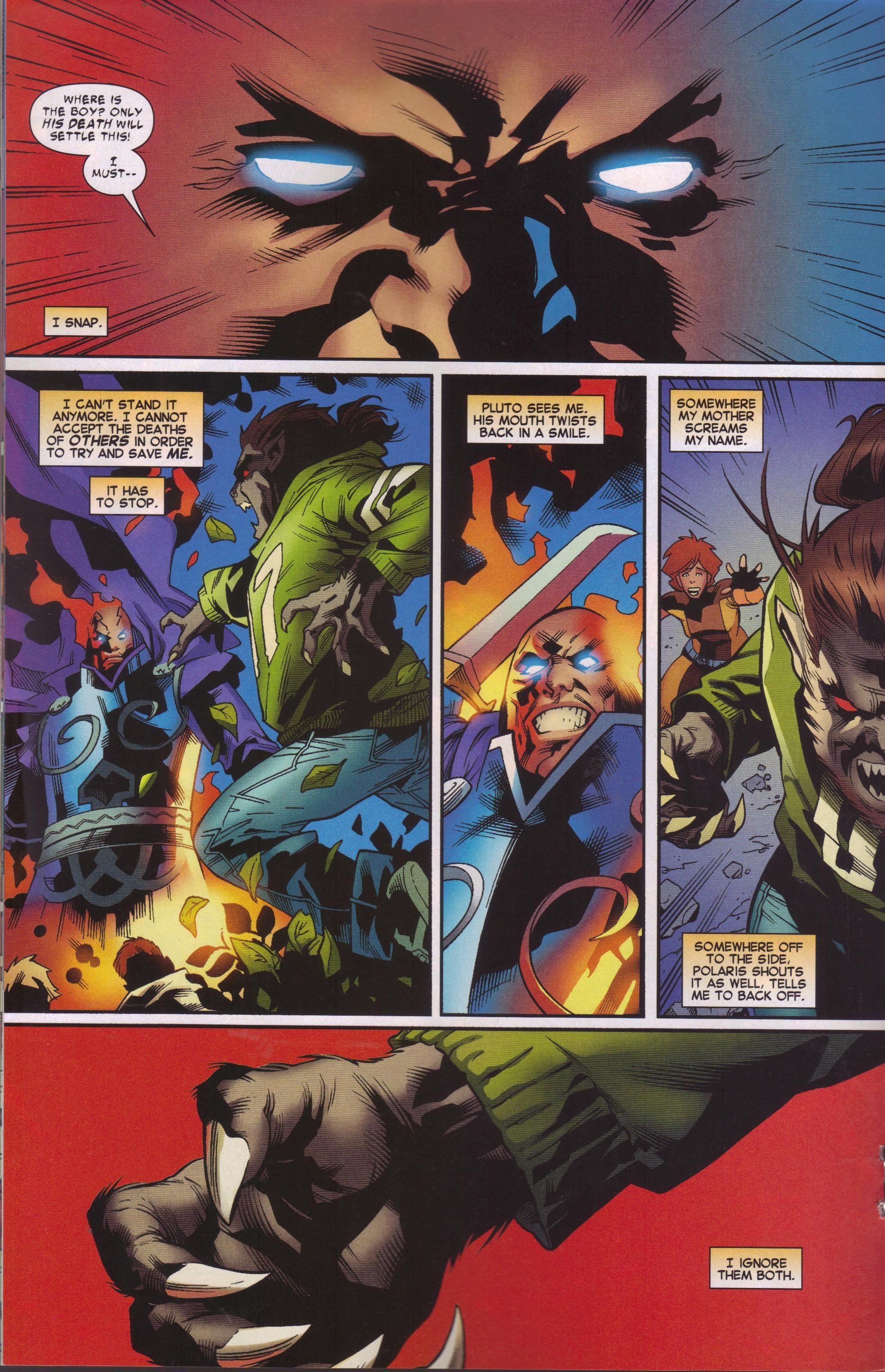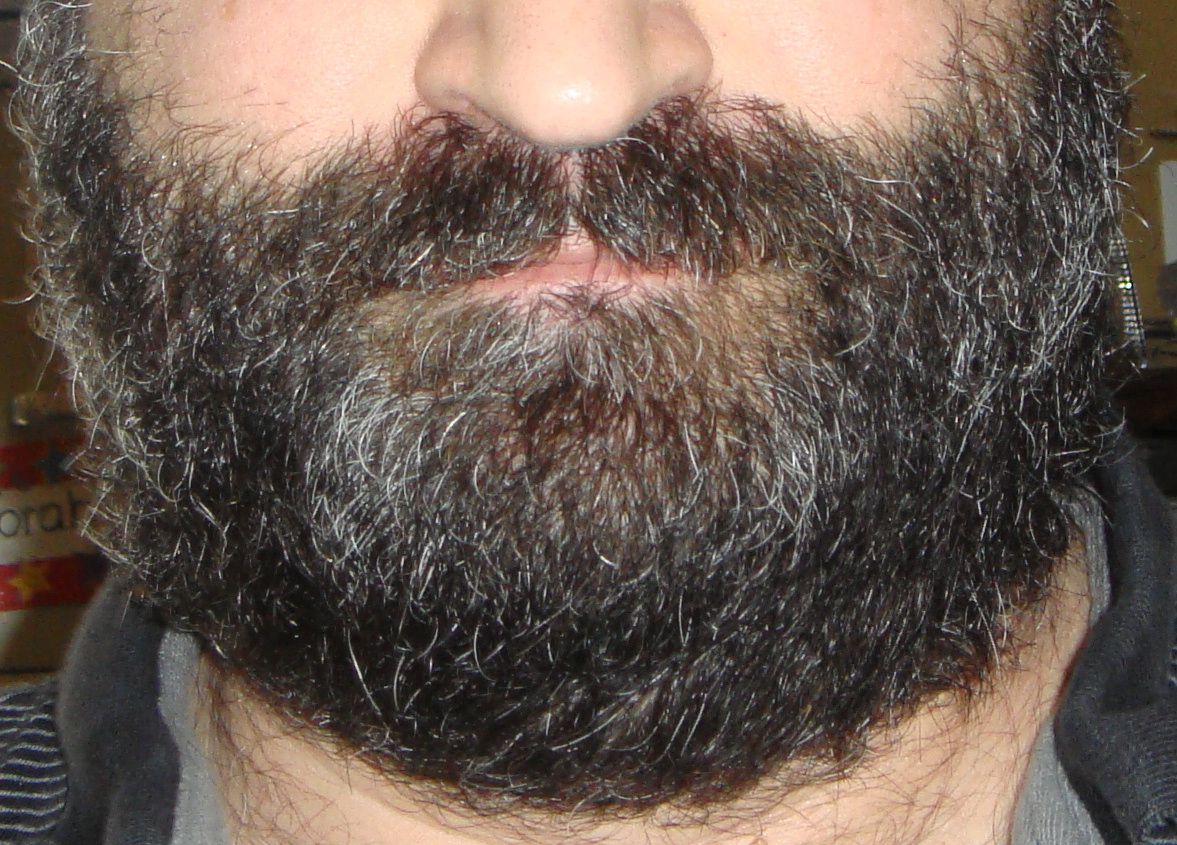There is not much importance in giving an award of importance to someone of no importance. (Joseph Heller, from Picture This)
Batwoman #17 ("World's Finest Part 5: Mercy") by J. H. Williams III (writer/artist), W. Haden Blackman (writer), Dave Stewart (colorist), Todd Klein (letterer), Rickey Purdin (assistant editor), Harvey Richards (associate editor), and Mike Marts (editor). $2.99, 20 pgs, FC, DC. Kate Kane created by Geoff Johns, Grant Morrison, Greg Rucka, Mark Waid, Keith Giffen, and Ken Lashley. Wonder Woman created by William Moulton Marston. Bette Kane/Flamebird created by Marv Wolfman and George Pérez. Maggie Sawyer created by John Byrne. Cameron Chase created by Doug Moench and J. H. Williams III. Mister Bones created by Roy Thomas, Dann Thomas, and Todd McFarlane.
Man, these 17-issue arcs that DC has been letting some of their talent get away with are brutal, aren't they? I mean, for a good amount of this, we've had Williams on art, so that's something, but that's still far too long to stretch things out. However, this ends about as well as it could, and I do like that Williams and Blackman tried a lot of different stuff in this final issue. Bette gets some revenge, sure, and Medusa has to pay, but it doesn't necessarily play out the way we might think, and I think that's a good idea. I've written before that I wish some animated movies - Toy Story 3 and Kung Fu Panda come to mind* - wouldn't end the way they do, because I think it might be a good idea to teach kids that people can change and that not everything needs to be solved with violence, and I like that Williams and Blackman show that conflicts can be solved in several ways, both violent and non-violent. Batwoman kicks ass when she needs to, but she also understands that there are different ways to fix things. It's refreshing in a superhero comic, especially because it stands in stark contrast to the blackness of so much of the DCnU.
I guess the big news in this issue is that Kate reveals who she is to Maggie Sawyer and asks her to marry her. It's coincidentally but interestingly timed right after the Orson Scott Card kerfuffle, and it's a nice way to end this giant arc. Their love story isn't all that convincing - they've been together about a week in DCnU time - but it's still a upbeat way to tie this entire story together, as so much of it dealt with family and what that means. I'm not entirely sure if Kate has thought it through - presumably Sawyer will have some issues with her lover being a vigilante - but I guess Williams and Blackman will explore that as the book moves forward, right? And we get a nice cliffhanger that sets up the next story arc. That's always nice.
I've mentioned a lot that I'm not really sure if I'm going to keep buying the book. I wanted to see this epic through to the end, and while Williams and Blackman got better at the writing, it's still not that great, and I'm not sure if Williams is permanently off the art chores or if he's taking the break to work on the Sandman book and then will return. I do like Trevor McCarthy, though, and if he can do the entire next arc, it will probably look pretty good. This is one of those books that I enjoy but I'm not sure if I really love. I definitely don't want the writers to start another 17-issue epic, that's for sure. This is a good place to jump off, however, so next month I'll have to think long and hard about picking up issue #18. I'm just not sure if it's worth it.
If you're reading this book in trade, I think it works much better. Plot-wise, the book turned out pretty well, which is why it probably works better in trade. And, you know, Williams is so freakin' good. It's impressive how complicated his pages look but how easy they are to read. Some artists are ambitious but lack the storytelling skills, but Williams is both ambitious and a good storyteller. I can't wait to see his Sandman mini-series.
* If you're interested, I think that in Toy Story 3, it would have been far better if Lotso had seen that the toys were kind to him and that would have made him reconsider being evil, and in Kung Fu Panda, Po's declaration that "there is no secret ingredient" would have made Tai Lung realize that his anger was misplaced. I certainly don't mind animated movies for kids that end with the good guys kicking the ass of unrepentant bad guys, but in those two movies, I think they would have been very well served by showing that bad guys aren't necessarily bad people and that they can change. Both Lotso and Tai Lung had fairly good reasons for their villainy, and I think it would have been powerful to show that they could recognize that and realize that their views of the world were slanted and they could move past it. I realize I'm probably in the minority with these opinions, but that's how I feel, man!
Rating: ★ ★ ★ ★ ★ ★ ★ ½ ☆ ☆
One totally Airwolf page:
This is part of a double-page spread, but Williams helpfully makes it read like a single page that flows into the right side, so I'm just using one side of it. A couple of things to note: Bette's excellent facial expression when the dude licks her, showing her utter revulsion at his actions, and the flame in the shape of a phoenix, linking this back to Bette's "resurrection" from her wounds. It's such a simple thing, but I very much doubt many artists would have thought to make the flames look like that. Which is why Williams is awesome.
The Black Beetle: No Way Out #2 (of 4) by Francesco Francavilla (writer/artist), Nate Piekos (letterer), and Jim Gibbons (editor). $3.99, 22 pgs, FC, Dark Horse.
Francavilla gets his hero out of the pickle he found himself in at the end of the issue #1 by a simple device, but it's still clever because it shows how well prepared the Beetle is when he goes out adventuring. It's the kind of thing we always see from Batman, but the Beetle narrates about why he's so well prepared, and it's quite neat. Then he investigates further, gets into yet another tight spot, gets out of it, and does more investigating! It might sound dull, but of course it's not - Francavilla keeps things zipping along, and he knows how to pace a book - just when the Beetle finds something important, the bad guy - Labyrinto - shows up and traps him in a sewer full of rats. So we get some nice action from that, but then we need to find something out about the mystery, right? I don't mind a comic that goes from quiet moments to action moments when it's structured as well as this book has been so far. And Francavilla has structured the book quite well - the mystery is interesting and feels more important than it appears on the surface, while Labyrinto is an oddball but menacing villain. Francavilla calls back to the short story that appeared in Dark Horse Presents, too, so presumably that will have something to do with the main story. There is that one scene where Labyrinto pulls a "Bond villain" move and doesn't make sure the Beetle is dead, but sometimes you just have to go with the classics, man!
I can't say too much about Francavilla's gorgeous artwork that I haven't said before, but it really is a pleasure to look at his comics. I will mention the last three pages, in which the Beetle takes a break and his alter ego (whose face Francavilla refuses to show) decides to pursue the case on his own. Until those pages, Francavilla has been using a lot of deep blue and red in the coloring, but as the day breaks, we get more oranges and yellows, and the page on which the Beetle gets ready to visit the night club where he thinks he'll find clues is beautiful, as we get more softer reds and oranges and purples instead of deep blues. It's a nice subtle difference between the dark world of the Beetle and the slightly brighter (relatively, of course) world of his alter ego.
So far, this is a very impressive book. I'm looking forward to seeing more of it!
Rating: ★ ★ ★ ★ ★ ★ ★ ★ ☆ ☆
One totally Airwolf page:
I love that Francavilla puts "SPLASH" at the top of his splash page. Anyway, I wanted to point out this page specifically because I don't think Francavilla got that effect by blurring it on the computer. It looks like he used flicks of a brush to make it appear that the Beetle is getting swept away by the water. If you really look at the page, you can see the individual strokes that turn the hero into a waterlogged piece of flotsam. I just find that impressive.
Dark Horse Presents #21. "Alabaster: Boxcar Tales Part 4" by Caitlín R. Kiernan (writer), Steve Lieber (artist/letterer), and Rachelle Rosenberg (colorist); "The Victories: Babalon Working Chapter 2" by Michael Avon Oeming (writer/artist), Nick Filardi (colorist), and *Aaron Walker (letterer); "Journeyman Chapter 2" by Geoffrey Thorne (writer) and Todd Harris (artist/letterer); "The Day the Saucers Came" by Neil Gaiman (writer), Paul Chadwick (artist), and Gaspar Saladino (letterer); "Cat's in the Cradle" by Shaun Manning (writer) and Andrew Drilon (artist/letterer); "Arcade Boy Chapter 1" by Denis Medri (writer/artist), Paolo Francescutto (colorist), and Frank Barbiere (letterer); "Station to Station Chapter 3" by Corinna Bechko (writer) and Gabriel Hardman (writer/artist/letterer); "Tiger Lung: Beneath the Ice Chapter 1" by Simon Roy (writer/artist) and Jason Wordie (writer/colorist/letterer); "X: The Pigs Part Three: The Brick" by Duane Swierczynski (writer), Eric Nguyen (artist), Michelle Madsen (colorist), Richard Starkings (letterer), and Comicraft (letterer); "Villain House Chapter 1" by Shannon Wheeler (writer/artist); "Finder: Third World Chapter 18" by Carla Speed McNeil (writer/artist/letterer), Jenn Manley Lee (colorist), and Bill Mudron (colorist); Jim Gibbons (assistant editor), and Mike Richardson (editor). $7.99, 80 pgs, FC, Dark Horse.
I suppose, maybe, that the highlight of this particular issue is the new Gaiman/Chadwick story? I don't know - it's a nice little love story, although it's a bit arrogant of the narrator, and maybe if it had been in first person rather than second (second person narration FTMFW!!!), it would have had more impact. The narrator sounds like a bit of a douche, is all I'm saying.
There's a lot of other interesting stuff in here, of course, so the Gaiman/Chadwick story doesn't have to get all the attention. Kiernan and Lieber's "Alabaster" continues to be a weird, somewhat disjointed southern Goth horror story, and it has a nice twist in it. I'm still partial to Thorne and Harris's work, and this chapter of "Journeyman" explains a bit about what's going on while still keeping things mysterious. I wasn't a huge fan of "Arcade Boy," but it's not terrible, and "Station to Station" ends with what appears to be a set-up for a mini-series of some sort. But hey - I'm done railing about that, and if Hardman and Bechko want to keep making comics, I'll keep reading them. Roy and Wordie's story is about a prehistoric dude who, for some reason, decides to head into tunnels under a huge glacier. Why? We'll have to wait and see! Roy's art has gotten better quickly, and while this doesn't demand too much from him, he does a good job capturing the claustrophobic atmosphere of the setting. I was curious why the dude is called "Tiger Lung" when he lived in the Alps, but I guess during the Pleistocene Era, tigers lived in Europe, so there's that. Shannon Wheeler's bittersweet story of two super-villains is obvious but still sad, and as usual, Carla Speed McNeil delivers a fine "Finder" story. The only two stories that were slightly disappointing were "The Victories" and "X," but it's not like they were all that bad. Oh, and there's a one-page vignette about Harry Chapin's "Cat's in the Cradle" - no, not about what an awful, awful song it is, but about how the narrator totally misses the point. It's pretty awesome, because it makes the song less mawkish and more douchey, if that's possible.
So, yes, DHP keeps trucking along. It's not surprising it wins Eisner Awards!!!
Rating: ★ ★ ★ ★ ★ ★ ★ ½ ☆ ☆
One totally Airwolf page:
Why yes, that dude is riding a pterodactyl and throwing a bomb into a giant, gaseous monster from another dimension. God, I love comics sometimes.
Deadpool #5 ("Star Wars: Revenge of the Gipper") by Brian Posehn (writer), Gerry Duggan (writer), Tony Moore (artist), Val Staples (colorist), Joe Sabino (letterer), and Jordan D. White (editor). $2.99, 20 pgs, FC, Marvel. Wade Wilson created by Fabian Nicieza and Rob Liefeld.
Well, shit just got real in the penultimate issue of the first Deadpool arc, as the violence that Wade has been meting out comes home to roost just a bit. It's fairly impressive that Posehn and Duggan have managed, in just five issues, to make me actually care enough about the characters so that when something horrible happens to them, I'm not exactly upset (that would be going too far), but shocked that they would go in that direction. Before that, though, there's some fun on the space station, where Undead Ronald Reagan plans to launch nuclear missiles (Russian ones, at that!) at the States as part of the Undead Presidents' plan to destroy our fair land (note: Undead Ronald Reagan was the name of my college punk band). Of course there are chimps on the space station, because Posehn and Duggan have to make a "Bedtime for Bonzo" joke (see below), but obvious humor can still be pretty darned funny. Deadpool gets rid of Reagan in probably the grossest way possible, and then it's all back to S.H.I.E.L.D. HQ for some celebratory beer. Until ... well, the bad stuff starts.
As I mentioned, I'm pretty surprised that Posehn and Duggan went so dark, but it's still pretty cool that they wanted to and were able to pull it off. Things around Wade tend to get pretty violent, after all. I'm very curious to see what the final issue of the arc is like. And I still can't believe I'm enjoying a Deadpool comic this much!
Rating: ★ ★ ★ ★ ★ ★ ★ ½ ☆ ☆
One totally Airwolf page:
There are quite a few fun things on this page - Wade's new power, the fastball special parody, Reagan's vanity, Reagan referencing "Bedtime for Bonzo" - that are pretty indicative of the series. If you don't like this page - the writing, the art, the obnoxious violence - than you're not going to like Deadpool. See how easy that is?
Happy! #4 (of 4) by Grant "Will I ever finish something on time?" Morrison (writer), Darick Robertson (artist), Tony Avina (colorist), and Simon Bowland (letterer). $2.99, 24 pgs, FC, Image.
You know that feeling when someone who you know is smarter than you are does something so stupid you think it must be something so beyond your pathetic intellect that you can't accept that sometimes, smart people do stupid things? Welcome to Happy!, ladies and gentlemen. Whenever the God of All Comics writes a comic, I think that it's going to be something I really have to think about, because it's Morrison. Try as I might, though, I can't discern any deep, obscure message in Happy! I think it just really does suck.
Okay, maybe that's too brutal an assessment. I mean, Morrison is doing a good job aping Garth Ennis, but he's aping the worst aspects of Garth Ennis, and no one wants TWO Bad Garth Ennises running around the comics world. I kept hoping this would be a story about ... something. Something beside a cliché-ridden burnt out cop looking for redemption. Or a drug-addled Santa Claus who likes to have sex with children. Or a priest who likes to watch said Santa Claus having sex with children. Or a dirty cop who wants to be clean but doesn't know if it's still possible. I mean, even Happy himself is a cliché. But there's nothing there. This is just ... crap. Man, that's depressing.
There have been comics by Morrison in the past that I haven't liked. I still don't think The Invisibles is all that good, although I haven't read it in a long time. I think The Filth is pretty dull. Some of his Batman stuff is drab. But Happy! is probably his nadir in comics, and that's really sad. Maybe there was a reason he stayed in the comforting confines of superhero comics for so long. I really hope this isn't a trend, because that would suck. Oh well.
I'd write more about why this sucks, but it would depress me. So let's just move on.
Rating: ★ ★ ★ ½ ☆ ☆ ☆ ☆ ☆ ☆
One totally Airwolf page:
I actually had a very hard time picking a page to show. Robertson's art is fine throughout, but what he's drawing is just so unpleasant that I really don't want to show any of it. I picked this one, frankly, because that dude just keeps saying "cunt." What a said way to end your life, dude.
Hellblazer #300 ("Death and Cigarettes Finale: Ash") by Peter Milligan (writer), Giuseppe Camuncoli (layouter), Stefano Landini (finisher), Brian Buccellato (colorist), Sal Cipriano (letterer), Gregory Lockard (assistant editor), and Shelly Bond (editor). $4.99, 41 pgs, FC, DC/Vertigo. John Constantine created by Alan Moore, Steve Bissette, and Jon Totleben.
You know what, DC? Fuck you and the horse you rode in on. Your long-running (and thanks to the idiots at corporate HQ, highest-numbered) series comes to an end, and you let Milligan have an extra-sized issues (I'm shocked that it's actually "double-sized" according to today's regular issue but isn't twice the price of a regular issue), but you don't let anyone write a text piece on the final page about the legacy of Hellblazer? Instead, we get a black page with white lettering that says "Vertigo 2013"? I mean, that's not even a fucking advertisment. Jesus, DC, no wonder you're a fucking joke.
Anyway, Milligan wraps up his 50-issue run with a strangely-paced issue - it feels rushed, even though he's probably had a while to get all his ducks in a row. I'll SPOIL things by saying that John does indeed come back to life - come on, you knew he would! - but not without some hiccups, and not without acting like a bastard one last time. The only real problem I have with the ending is that I'm dumb and have a bad memory, so I can't quite remember what is going on at the end. I'm sure it's back in some issue somewhere, but I'll get around to it eventually. It does lead to a haunting and bittersweet final page, though.
So that's Hellblazer. It was probably never a big seller and is less of one these days, and it presumably doesn't sell enough in trades or DC doesn't care about that market enough to keep it going. Milligan's run, I think, will stand the test of time and be up there with the best work on the title, but I haven't had a chance to re-read it yet, so I can't say for sure. I do know that while he wrote it, it was consistently one of the best books out there, so it's a shame that it had to go. C'est la vie, eh?
(Here's a nice appreciation of Hellblazer, although I don't share the writer's love of Jamie Delano - he's okay, but nothing great.)
Rating: ★ ★ ★ ★ ★ ★ ★ ½ ☆ ☆
One totally Airwolf page:
This is the first page of the issue, and it's a powerful one. Gemma, who has caused John so much grief recently, is trying to justify suicide (don't fret - she doesn't do it) because her uncle has been too powerful an influence on her life. Camuncoli and Landini draw her so well in Panel 1, mainly because they give her no personality whatsoever - she's been drained of life by her association with her uncle. Milligan has put Gemma through the wringer quite a bit during his run, and this issue brings that nicely to a head. This page just sets us off!
Kill Shakespeare: The Tide of Blood #1 (of 5) ("The Winter of Our Discontent") by Conor McCreery (writer), Anthony Del Col (writer), Andy Belanger (artist), Shari Chankhamma (colorist), Chris Mowry (letterer), and Tom Waltz (editor). $3.99, 26 pgs, FC, IDW.
A few years ago, the 12-issue Kill Shakespeare turned out to be a pretty dammed good comic, and now the creative team - without a key member, which I'll get to - returns for a sequel. The conceit of the series was, essentially, that Shakespeare's characters were actual people, and Shakespeare was their god. Hamlet went on a quest to find him, because he has absconded, and over the course of the series, he not only found Shakespeare, he had to fight Richard III and Lady Macbeth as well. Now, Shakespeare has disappeared again, and the good guys - led by Juliet, a very capable general and Hamlet's new love, Othello, and Hamlet - are faced with a new threat, a mean army led by "Titus" - Andronicus, I would assume, and I can't remember if he was mentioned at the end of the previous series. Meanwhile, Romeo is grumpy. He lost his girl and he's kind of shut out of the new ruling regime. So he drinks a lot. Hamlet and Juliet try to give him a purpose, and while he's out spying on the evil army, he spots a girl trying to escape to the good guys' lines. He rescues her and discovers that she's Miranda, who has bad news - her father, Prospero, has awoken on his island and has decided to destroy the world. Like you do. Maybe he just wanted an English muffin but he couldn't find any. That would make me want to destroy the world, I'll tell you that much. After Miranda convinces everyone that Prospero is, in fact, real (because all the made-up Shakespearean characters think he doesn't exist), they head out on a quest to stop him. A-questing we shall go!
This issue is a lot like the first series - full of references to various plays, pretty exciting, and fun to read. Belanger's pencil work is quite good, although the absence of original colorist Ian Herring has, it seems, a detrimental effect on the art. Chankhamma's colors are brighter than Herring's, but they also seem a bit messier, and Chankhamma adds some effects that seem off, like the fact that the lips of the women seem awfully glossy. Belanger drew some very cool panels in the original series, experimenting quite a bit with the storytelling, and that's lacking in this issue, although I suppose he could easily ramp that up in later issues. It's still a nicely drawn comic, but it lacks the impact that the original did ... at least so far.
Still, this is a remarkably entertaining comic, one that's far more erudite than you might expect. It's very cool they were able to do a sequel, and I hope it's as good as the first series!
Rating: ★ ★ ★ ★ ★ ★ ★ ☆ ☆ ☆
One totally Airwolf page:
This is a nice example of Belanger doing some nice things - the top panel feels more frenetic because Belanger doesn't use borders, and Romeo's sword leads our eye one way and then the other. Notice the brightness of the coloring - again, I'm not sure if the art has less of an impact because Belanger is inking it slightly differently or if Chankhamma is not coloring it as strongly. We'll see, I guess.
Mind Mgmt #8 ("The Futurist Chapter 2") by Matt Kindt (writer/artist), Ian Tucker (assistant editor), and Brendan Wright (editor). $3.99, 25 pgs, FC, Dark Horse.
Not much happens in this issue of Mind Mgmt until the very end, but due to Kindt's obsessive attention to details, each issue is a wonderful little slice of weirdness, and that's why the book works so well even if the action is confined to a few pages. Lyme and Meru are still wandering around trying to find old agents before the "Eraser" rebuilds Mind Management, and so we find out a bit more about Perrier and there's a strange riot and some dude who can shoot really, really well. Mainly, Kindt spends this issue giving us some nice character development and continuing to show how weird the world is. Of course, any single issue of Mind Mgmt has the little extras, so we have the continuation of the strange novel running along the edge of most of the pages, the short vignette at the back, and the inside front cover story, which in this issue is about "The Wish," a thief who always take random items to a heist that turn out to be crucial during the robbery. I would read an ongoing series about The Wish, I'll tell you that much, and I want Kindt to make it happen, because it's a tremendous idea.
Mind Mgmt just keeps moving along, quietly becoming a must-read. As I've noted, Kindt seems to be getting better with each issue, and his world keeps filling up with interesting characters. So yeah, I'll keep buying it!
(I should point out that Kindt actually knows that the pyramids at Giza are very close to Cairo, which is nice. It's not too hard to figure this out, yet a lot of artists still insist on putting them out in the middle of the desert. They're not. Trust me.)
Rating: ★ ★ ★ ★ ★ ★ ★ ★ ☆ ☆
One totally Airwolf page:
I like the metafictional aspect of this page, as Lyme is perhaps commenting on reactions to Kindt's own art? I don't know - I've always liked Kindt's art, so maybe I'm full of it.
Nova #1 by Jeph Loeb (writer), Ed McGuinness (penciler), Dexter Vines (inker), Marte Garcia (colorist), Albert Deschesne (letterer), Sana Amanat (associate editor), and Stephen Wacker (editor). $3.99, 24 pgs, FC, Marvel NOW! The Nova Corps created by Marv Wolfman. Gamora created by Jim Starlin. Rocket Raccoon created by Bill Mantlo and Keith Giffen.
It's been a while since I bought a Jeph Loeb comic, because while I never thought he was the greatest writer, his work with Tim Sale (either from DC or Marvel) usually looked great and at least had a "greatest hits" feel to them - I doubt if anyone thinks a band's Greatest Hits album is their best, but it's certainly comfort food, right? Loeb could be counted on to put together a solid if somewhat forgettable comic, notable only because he was able to work with such a great artist. I think the last Loeb comic I actually bought was Catwoman: When in Rome, but I might be getting the chronology wrong.
I drifted away from Loeb because he became such a big name that Marvel started charging far too much for his comics, plus he seemed to get even lazier with regard to his writing. His work with Ed McGuinness - whose work I generally like - is a perfect example of this: It's really full of bombast and little else, and I just don't have any interest in it. And now he's back with McGuinness on Nova, and, well, it's a fairly typical Loeb comic. If you're a fan of Loeb, you'll probably like this. If you're not, this probably won't convert you.
Anyway, this issue takes forever to get going, despite some big action scenes by McGuinness sprinkled throughout the book. Sam Alexander is a typical teenager living in Carefree, AZ, whose father, Jesse, tells stories about being in the Nova Corps before Sam was born. Sam, as the typical 15-year-old, thinks his father is full of it, until one night when his father disappears and two characters show up in his hospital room (he's there because he bumped his head when he fell off his skateboard). His father, mind you, is the janitor at his school, so Sam doesn't think much of him anyway. Loeb has never been afraid to wallow in sentimentality, and while this issue itself isn't like that, it seems as if Loeb is setting up a great father-son reconciliation in future issues. As subtlety has never been Loeb's strong suit, I can't imagine how mawkish that will be.
But this isn't a review of future issues, this is thoughts on this issue, and it's riddled with clichés, which isn't surprising from a Loeb script. Is Jesse - as a member of the Nova Corps - a crazy rule-breaker who just happens to always make the right move, no matter how many rules he breaks? You bet! Is Jesse - the current version - a sad drunk because he gave up an exciting life in the Nova Corps to have a family? Of course! Does Sam get bullied by some dude right out of Stereotypical Bullies 101? Sure! Is there a clueless principal and an alternative - but not TOO alternative - cute girl at the school? Definitely! Does the clueless principal suspend Sam even though the bully always bullies him out in the open, where everyone can see it? Boy howdy, does he! Is Sam completely oblivious to the fact that cute faux-alternative girl digs him because he's too busy being angry at his dad? Yes indeedy! It's just that kind of comic!
Plus, I'm tired of lazy writing. Loeb sets this in Carefree, which is fine. Carefree is not too far north of Scottsdale, and about 4000 people live there. So yes, it's a small town, but Sam acts like it's in the absolute middle of nowhere, which it ain't. Plus, about three minutes on Google showed me that there's no such place as "Carefree High School" - maybe copyright laws keep Marvel from putting "Cactus Shadows High School" in their comics, but that's the name of Carefree's high school. It's really not that hard to do this, but a little effort from writers and artists would be nice.
Anyway, this is a fairly dull comic. It doesn't do anything interesting with the characters, and it feels like a "classic Loeb comic" - as I noted above, if that's what you like, you'll probably like this. It's just not something that floats my boat, though. Beyond some nice McGuinness splash pages, this is a lot of empty calories.
Rating: ★ ★ ★ ★ ★ ☆ ☆ ☆ ☆ ☆
One totally Airwolf page:
I like McGuinness's storytelling on this page, especially with regard to Carrie. When we first see her, she's a bit hunched, terrified to talk to the dude she obviously has a crush on. She's trying to find something to say, but she's very shy. She smiles a bit when she offers to help, and then looks down and twists her mouth when she says it's just something to do, perhaps in response to Sam's surly "Why would you do that?" in the preceding panel. Her eyes light up when Sam says she's cute, and her hand pauses at her neck, barely touching her pink strip of hair. McGuinness doesn't show her face in the last panel, but Loeb's ellipsis is important, because it doesn't show bright confidence, it shows resignation that Sam is clueless. It's a nice page. Too bad the rest of the book is big and bombastic instead of quiet and real.
Saga #10 by Brian K. Vaughan (writer), Fiona Staples (artist), and Fonografiks (letterer). $2.99, 22 pgs, FC, Image.
Damn it, Saga! Why can't you just pick a level of quality and stick with it, instead of jerking me around every month? After last issue's kind of weak sauce story, this issue picks up again, although the weak sauce beginning really almost killed it. I'd like to have time to read every big series Vaughan has written, because I had an idea about him - maybe he's just not good at writing characters? Oh, he can write some clever dialogue, to be sure, but it's so unbearably hip and kewl that it doesn't count as characterization. When he tries to build up his characters, at least so far in Saga, he's terrible at it. That's why the first few pages of this book stink, because whenever Vaughan has worked on Marko and Alana and their great love, it's been lousy. I mean, I was thisclose to putting the book down when Alana said "which is easily the most badass thing I've ever said." Jeebus, who talks like that? Alien hipsters, apparently. But that's the first five pages. Suddenly, we're back in the present, and there are terrifying midwives and ghost gorillas and giant eggs hatching and - well, Alana doesn't know that Hazel's umbilical stump is going to fall off because she's just that stupid, but that's only a few panels - and The Will and Gwendolyn going batshit and an excellent final page and I'm thinking, What the hell, Brian K. Vaughan? WHY MUST THIS FURSHLUGGINER BOOK BE SO FRUSTRATING?!?!?!?
I just don't know what to do with Saga. This is a pretty cool issue after the first five pages, and I'm still curious enough to keep checking it out. But as usual, it nags at me. I wish I liked it more.
Rating: ★ ★ ★ ★ ★ ★ ★ ☆ ☆ ☆
One totally Airwolf page:
Staples does nice work on this issue, and I love her gorilla, with its glowing orange and yellow and its goofy grin in Panel 3. This isn't the strongest issue, art-wise, but there are a lot of cool pages, and this is one of them.
Sherlock Holmes: The Liverpool Demon #2 (of 5) by Leah Moore and John Reppion (writers), Matt Triano (artist), Brennan Wagner (colorist), and Simon Bowland (letterer). $3.99, 22 pgs, FC, Dynamite Entertainment. Sherlock Holmes and John Watson created by Sir Arthur Conan Doyle.
Holmes and Watson investigate the strange murder at the church, which seems to be the work of Spring-Heeled Jack, while the rougher elements of Liverpool society do their thing. Moore and Reppion seem to bring the two threads together a bit at the end, but I have to believe it's a red herring, because it's only issue #2. Like their previous Holmes adventure, it just moves along nicely, and while I'm still a bit freaked out by Fred Astaire playing Holmes, Triano's art is perfectly fine. I don't really have a lot to say about this, except it's pretty good.
Rating: ★ ★ ★ ★ ★ ★ ☆ ☆ ☆ ☆
One totally Airwolf page:
I always like to see good lettering, and the final panel gives us a nice scream, with Wagner coloring it nicely as it turns more, I guess, blood-curdling? You can almost feel the screamer getting choked off by blood rising into his or her throat. For some reason, the evolutionary ladder of man next to the dude holding the lantern just makes it freakier. Or maybe that's just me.
The Sixth Gun #29 ("Winter Wolves Part Six") by Cullen Bunn (writer), Brian Hurtt (artist), Bill Crabtree (colorist), Douglas E. Sherwood (letterer), and Charlie Chu (editor). $3.99, 23 pgs, FC, Oni Press.
Hot dang, this is a good issue of The Sixth Gun. It's the end of the arc, and while last issue resolved the problem of the Wendigo, in this issue Becky and Drake are reunited with Gord, Kirby, and Asher, and as the latter two of those have been not terribly nice to our heroes in the past, it's not a totally pleasant reunion. Bunn uses this issue to set up the next arc, but also to show that Becky is tired of getting pushed around and that Missy Hume might have fallen out of favor with those people who oppose our heroes. So there's a lot going on even though the main conflict of the arc has been wrapped up. The best part of the issue is when Becky decides to use her gun to "visit" Missy Hume in her spirit form, because while Becky has always been a cool character, Bunn has been turning her slowly into a bad-ass, and in this issue, she shows how far she's come. Of course, given the power of the guns, I'm sure this isn't necessarily a great thing, but it's still nice to see how well Bunn has developed these characters. Hurtt and Crabtree don't get to draw the Wendigo anymore, but they still do a superb job, as usual. Hurtt nails the crazed look in Hume's eyes when she sees what Becky can do, and he gets to draw some weird creatures in the epilogue, which shows how horrific this world really is.
I always like this comic, of course, but every so often, Bunn and Hurtt take it up a notch, and this issue is one of those times. I know it's not a good place to jump on, but if you're looking for a reason to buy this series, this is a good example of how good it is.
Rating: ★ ★ ★ ★ ★ ★ ★ ★ ☆ ☆
One totally Airwolf page:
Hurtt gives us a dynamic page here, with Becky firing like crazy in the first panel, with the paths of the bullets leading us to the two lower panels and the bottom of the stairs. While the panels don't line up exactly, it's still nifty how Hurtt does it. Crabtree does a wonderful job here, too, with Becky's red spirit form dominating the page, but the red from her bullets illuminating everything, and contrasting nicely with Missy's black dress, which seems to suck up light. I assume Hurtt did the sound effects, although notice that they seem overlaid on the page, so perhaps it's Sherwood. Either way, they're pretty keen, as the "spirit bullets" seem to crackle, while the regular bullets (as we see in Panel 3) are just loud. Nice distinction, there.
The Sixth Gun: Sons of the Gun #1 by Cullen Bunn (writer), Brian Hurtt (writer) Brian Churilla (artist), Bill Crabtree (colorist), Douglas E. Sherwood (letterer), and Charlie Chu (editor). $3.99, 22 pgs, FC, Oni Press.
Bunn and Hurtt launch their spin-off series with Brian Churilla on art, and I hope it does well. Poor Churilla - he's quite a fine artist, but he just can't find a book that lasts too long. I don't know if this book is supposed to be an ongoing or a mini-series, but I just hope it lasts as long as Bunn and Hurtt want it to.
Anyway, the focus of this series is the evil general's cronies, and it's set before the events of the main series, so we see a younger Drake on one page, presumably just to link it to the main series a bit more. Then we get the story of Bill Sumter, who carries the First Gun, which "strikes with the force of a cannon shell." He's out in the desert, almost dead, when he's found by some bad dudes who are going to leave him to die until he mutters that he knows where some fabled fountain is. So they take him in, but can you really trust thieves? The short answer: No. The long answer: Nope. Of course Bill can't trust them, and so things get violent. This issue sets up the plot pretty well, as Bill discovers that more people know about the six guns than is maybe healthy, so presumably the big bad guys (who are, unfortunately, the standard bad guys of the Old West - if you don't know who they are, you haven't seen/read enough Westerns) are going to figure prominently as they try to get their hands on the guns.
Churilla doesn't get to draw monsters, unfortunately, because he's so damned good at that, but he does his usual good job with the issue. He's a bit too cartoony for a Western, but that's not too big an impediment, because the setting is more supernatural than your standard Western, and that plays more to his strengths. The final few pages of violence are really well done, giving us a good sense of the action while building to an explosive (literally) finale. It's a good way to end the book, art-wise.
As I noted, I have no idea if this is a mini-series or an ongoing (Oni usually lists it as a mini-series in Previews, and they haven't with this one, so I'm going to assume it's an ongoing until someone tells me otherwise), but it's a pretty good start. Hey, if the market can bear it, I say - let the spin-offs come!
Rating: ★ ★ ★ ★ ★ ★ ★ ½ ☆ ☆
One totally Airwolf page:
This is a nice, atmosphere-creating page, beginning with the quiet street setting the scene, the creaking door, the clinking bottle, and Bill instantly alert to take on Sam, who's up to no good. There's a lot of information on the page, but Churilla gets it all pretty easily, and the final image - Bill snapping Sam's arm like a twig - is very keen. Not a badly designed page at all, is it?
X-Factor #252 ("Hell on Earth War Part Three") by Peter David (writer), Leonard Kirk (penciler), Jay Leisten (inker), Matt Milla (colorist), Cory Petit (letterer), Jennifer M. Smith (assistant editor), Daniel Ketchum (editor), and Nick Lowe (group editor). $2.99, 20 pgs, FC, Marvel. Jamie Madrox created by Len Wein, Chris Claremont, and John Buscema. Layla Miller created by Brian Michael Bendis and Oliver Coipel. Lorna Dane/Polaris created by Arnold Drake, Don Heck, Werner Roth, and Jim Steranko. Monet St. Croix created by Scott Lobdell and Chris Bachalo. Julio Richter/Rictor created by Louise Simonson and Walt Simonson. Shatterstar created by Fabian Nicieza and Rob Liefeld. Armando Muñoz/Darwin created by Ed Brubaker and Pete Woods. Rahne Sinclair/Wolfsbane created by Chris Claremont and Bob McLeod. Mephisto created by Stan Lee and John Buscema. Pluto and Hela created by Stan Lee and Jack Kirby. Satannish created by Roy Thomas and Gene Colan. Asmodeus created by Michael Fleisher and Don Perlin. Satana created by Roy Thomas and John Romita, Sr.
The war continues, with a lot of action just actioning along. Here's what happens: Polaris steals Pluto's sword using her powers. Then everyone attacks Pluto and his minions (my wife and I can't be the only ones who have ever wished they had minions; that would be awesome!). Monet attacks Pluto, Darwin saves Rahne's life, Pluto isn't affected by Monet, Pluto gets his sword back and clocks Polaris, then Pluto wipes everyone out. Tier doesn't like this, so ... well, see below. Mephisto decides to stop fooling around with his allies and start kicking ass on his own, and the team decides that discretion is the better part of valor and skedaddles. Sure, something horrible happens to one of their members, but that's always happening, right?
So there's a ton of action, but as usual with these kinds of superhero comics, no other superheroes notice the sky acting strange or anything. That's fine, though - I like X-Factor hanging out in its own little corner of the Marvel Universe, doing its thing. And it's nice that the recap page caught up to real life and mentioned David's stroke. Let's hope he's doing better!
Rating: ★ ★ ★ ★ ★ ★ ★ ☆ ☆ ☆
One totally Airwolf page:
I've always liked that kind of Panel 1, where the face kind of bleeds off into the margins without really ending. I don't know why, but it's keen. I'm not entirely sure what Tier is doing in Panel 2 - running toward Pluto, maybe? - and I'm not sure why he teleported in from 1993, given his ponytail, but it's still a nice page, especially the first and last panels, which are linked by Milla's red coloring. This is a really bright book - it seems far brighter than most of what Marvel and DC are putting out - and I wonder if it's just the color choices Milla makes or the process he uses. Either way, it's interesting.
Resident Alien volume 1: Welcome to Earth by Peter Hogan (writer), Steve Parkhouse (artist/colorist/letterer), and Philip R. Simon (editor). $14.99, 98 pgs, FC, Dark Horse.
This includes the Dark Horse Presents stories and the mini-series, which is nice. I still wish this had come out before the story returned to the pages of DHP, but such is life, I suppose!
Tales from Beyond Science by Rian Hughes (artist), Mark Millar (writer), Alan McKenzie (writer), John Smith (writer), and Steve Cook (letterer). $16.99, 86 pgs, FC, Image.
I will buy almost anything that Rian Hughes draws, so this collection of stories from 1992-1994 was an easy purchase, but you'll notice that Mark Millar wrote some of the stories. That makes this the first comic Millar has been associated with that I've paid money for since the end of Wanted, when my Millar boycott began. I don't know if it counts, since it's not exactly new Millar material, after all. Rian Hughes is just that good, damn it!
**********
I don't have much else to say, and it's getting late in the day, but I will point out that on Wednesday in the Basin, it snowed. SNOWED! It didn't snow right at my house, but in parts of Scottsdale and Gilbert, it was coming down. It was the most significant snowfall in this part of Arizona since 1998, but apparently this is the most we've gotten in the Basin since the 1930s. Man, the weather has been weird. But that was the big news of the week around these parts.
Meanwhile, TAGS ARE BACK! Yay, tags! I love tags, and I'm so glad that we can see them again - they're awfully handy, or at least I think so. Anyway, thanks to our Dread Lord and Master for getting together with the Grand Poobah to bring back the tags. I'm sure they did it because they FEARED THE BEARD!!!!
Let's move on to the Ten Most Recent Songs on My iPod (Which Is Always on Shuffle):
1. "Something I Can Never Have" - Nine Inch Nails (1989) "My favorite dreams of you still wash ashore, scraping through my head 'til I don't want to sleep anymore"
2. "Locomotive Breath" - Jethro Tull (1971) "He hears the silence howling, catches angels as they fall"
3. "Electrolite" - R.E.M. (1996) "Stand on a cliff and look down there - don't be scared"1
4. "Urgent" - Foreigner (1981) "But I'm not looking for a love that will last, I know what I need and I need it fast"
5. "Hunger Strike" - Temple of the Dog (1991) "And they're farming babies while slaves are working"
6. "Roulette" - Grace Potter and the Nocturnals (2012) "I'm a helpless soul with a hopeless hand and my heart's going deeper in debt"
7. "Home" - Midnight Oil (1996) "But we are alive, we that have wings; we have devices can do anything"
8. "Three Hits" - Indigo Girls (1992) "Would you trade your words for freedom?"
9. "Which Way to America" - Living Colour (1988) "Where is my VCR, my stereo, my T.V. show?"
10. "In the Aeroplane Over the Sea" - Neutral Milk Hotel (1998) "For now we are young let us lay in the sun and count every beautiful thing we can see"2
1 New Adventures in Hi-Fi: Greatest R.E.M. album? Discuss.
2 Yes, it's "lie," not "lay," but that's just the way it is, right?
I'm taking next week off because I'm attending the convention in Seattle, so I won't get my comics until I get back (I'm flying up there on Wednesday morning). I'm sure you'll all survive without my rambling posts, right?
Have a grand weekend, everyone! I hope it's enjoyable!


